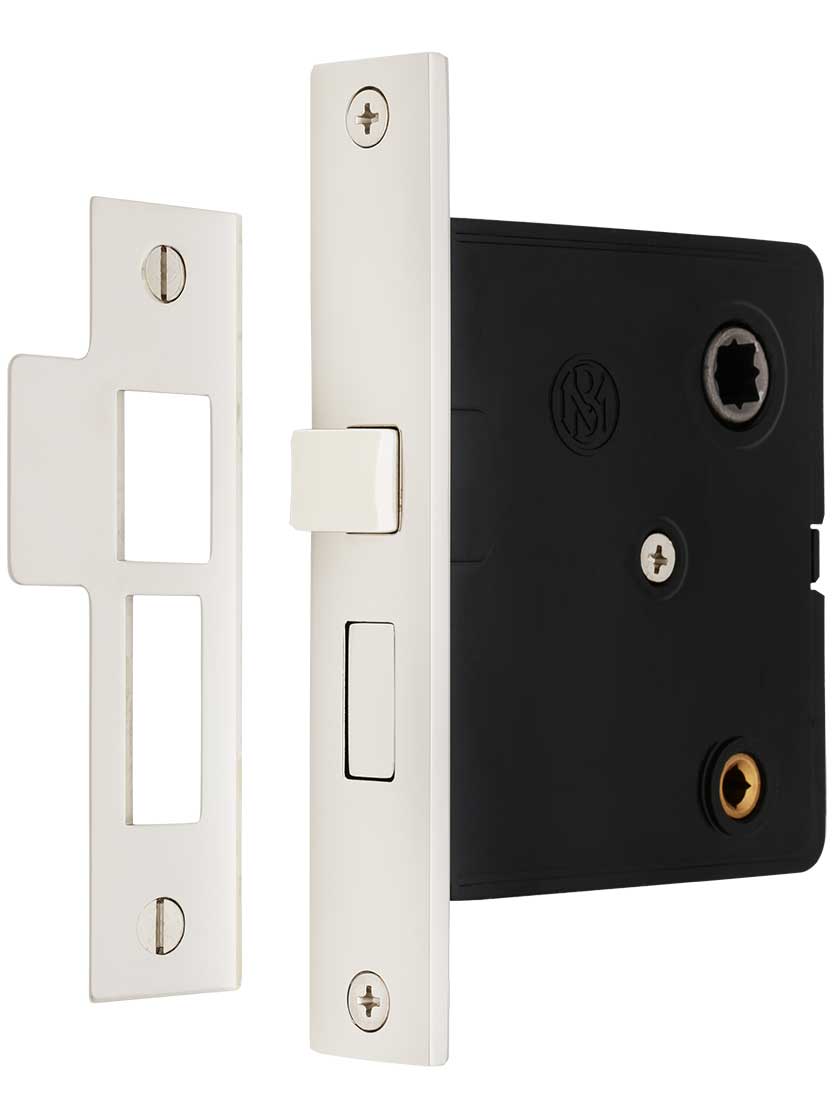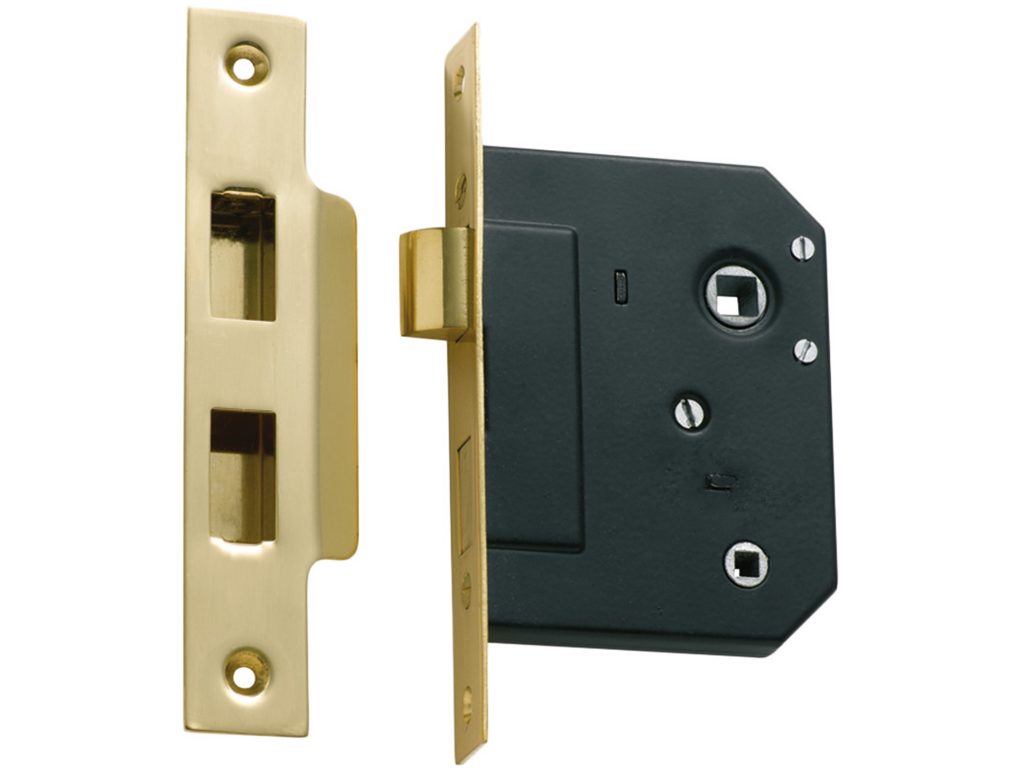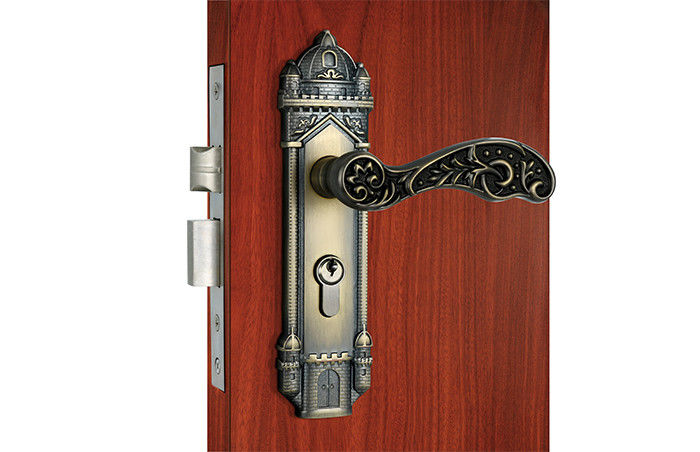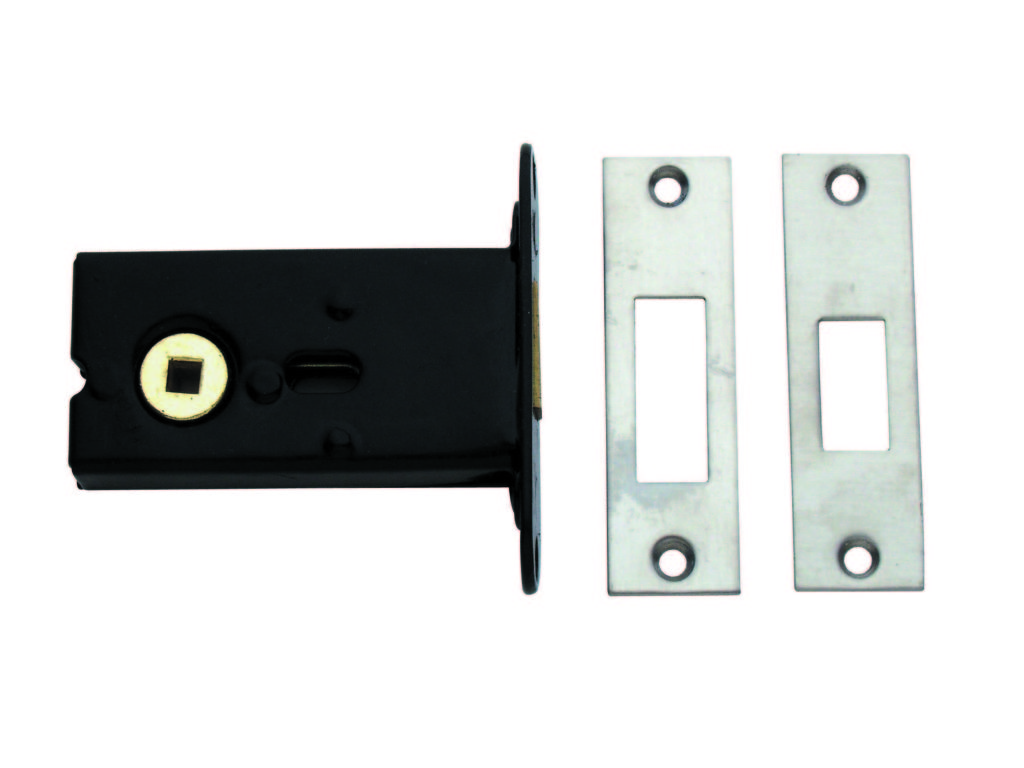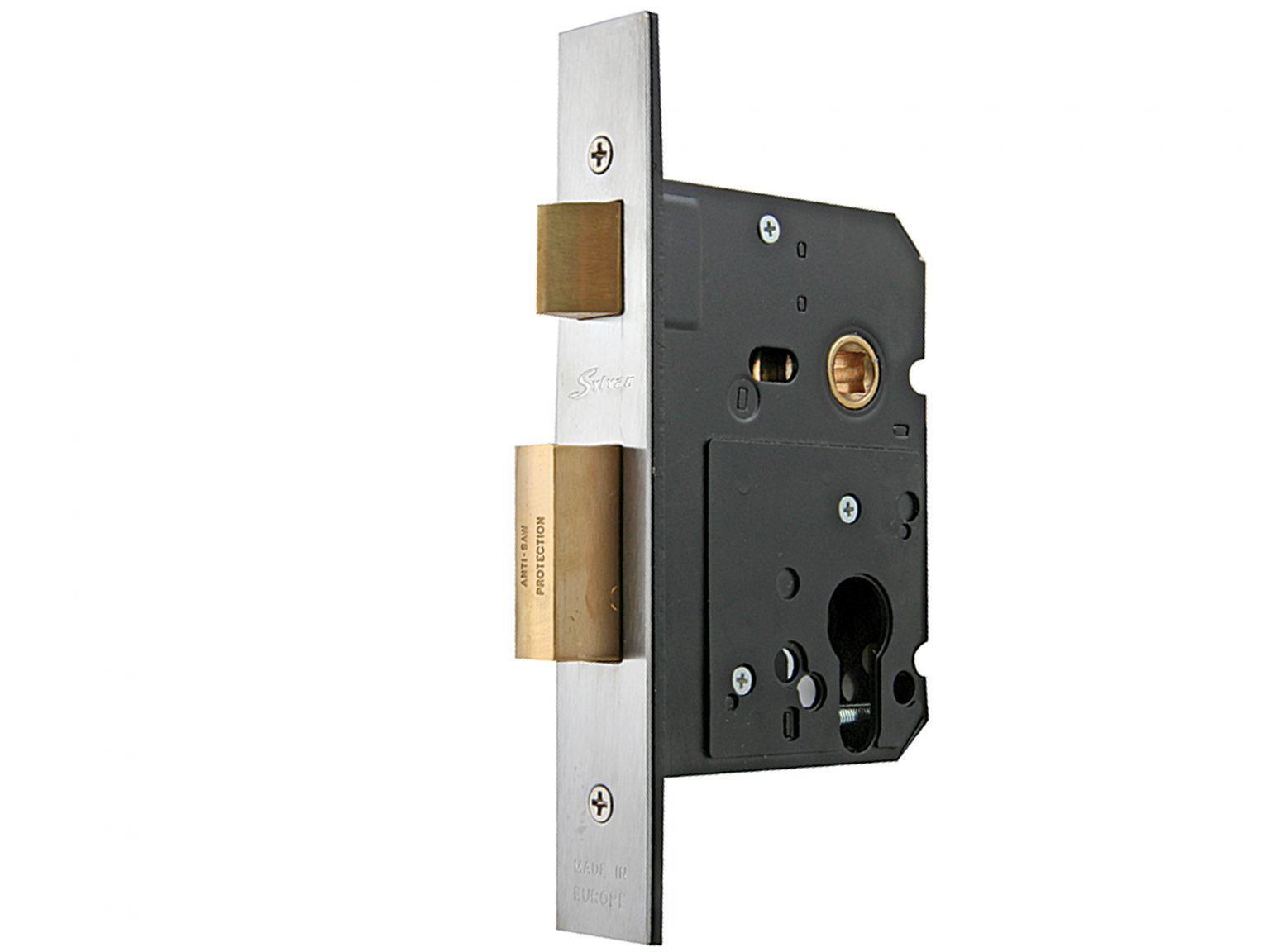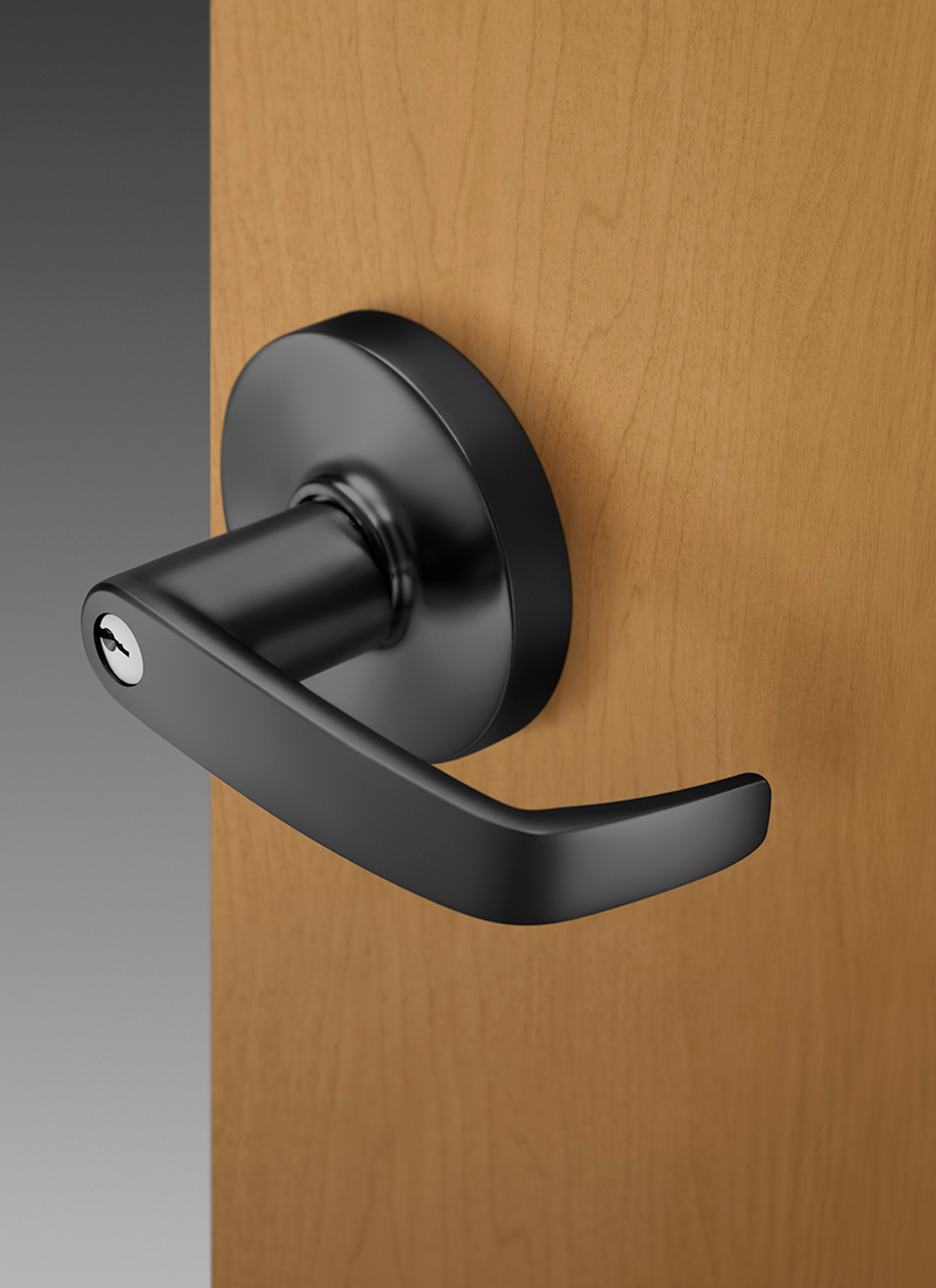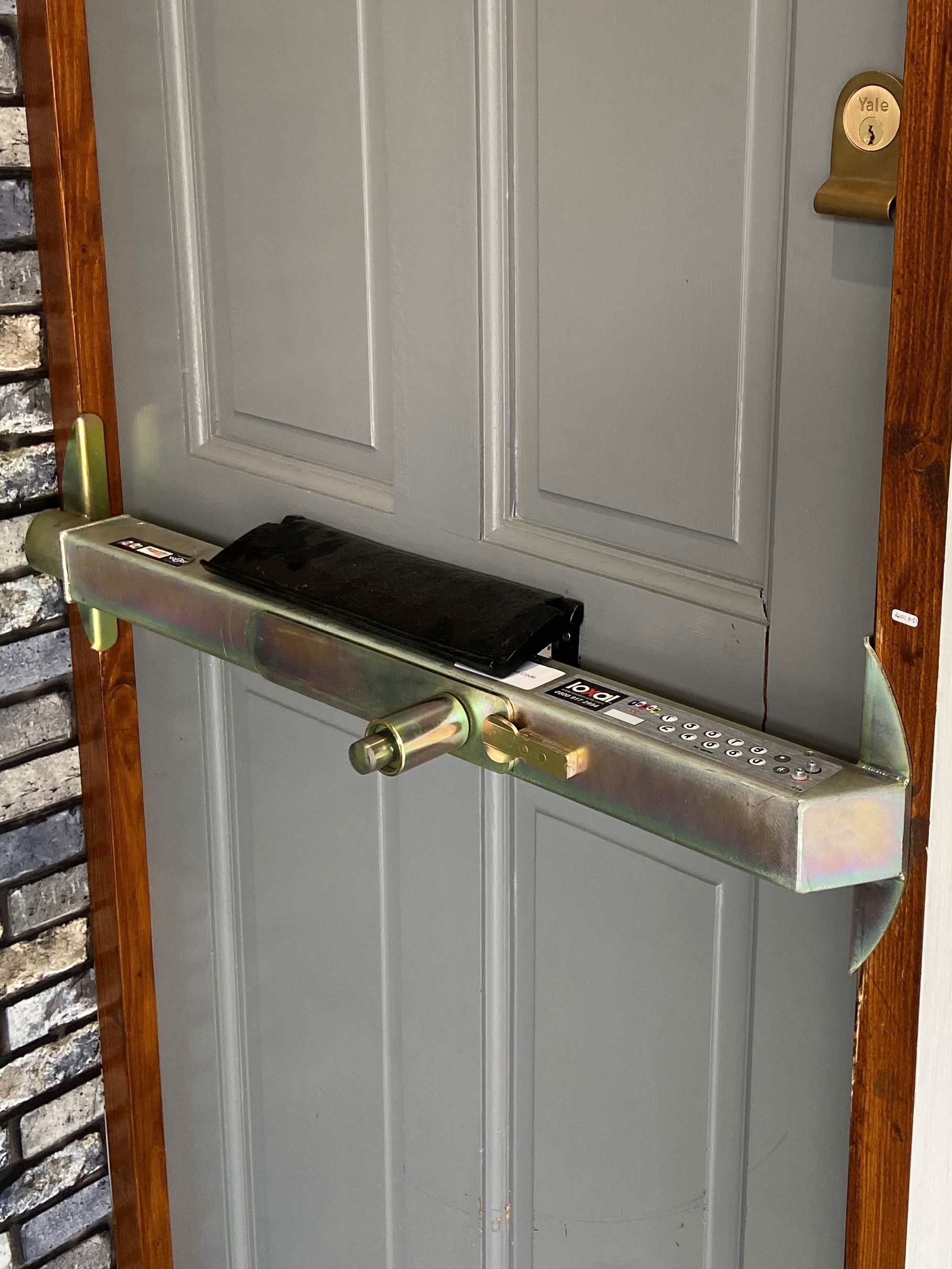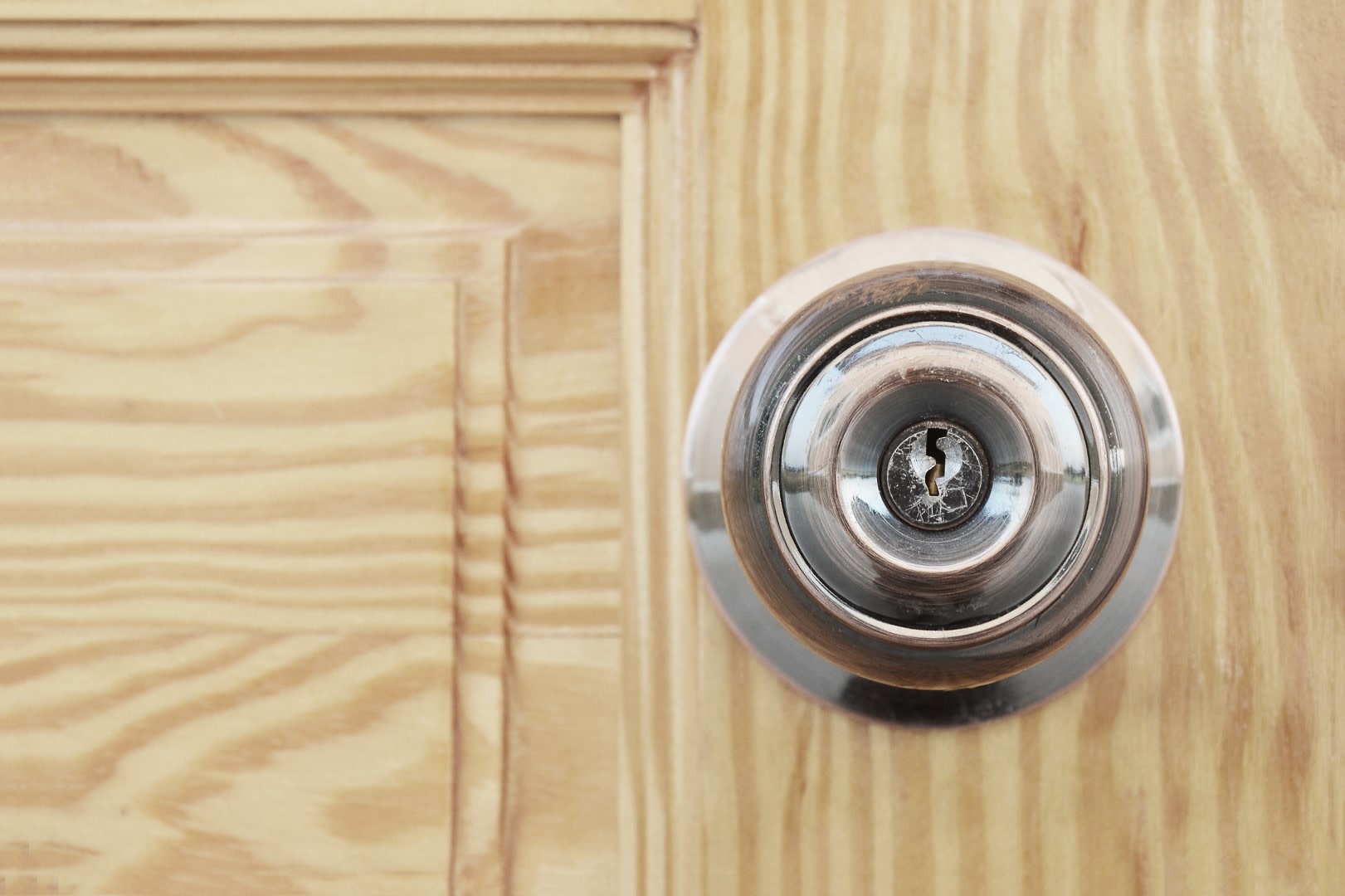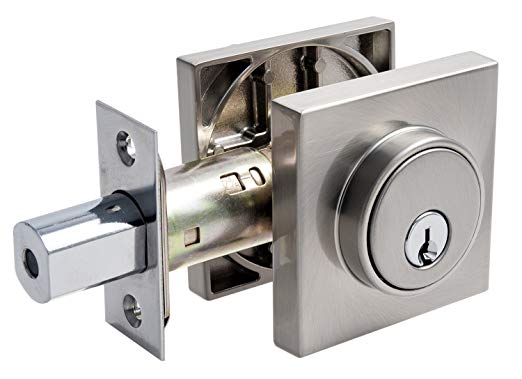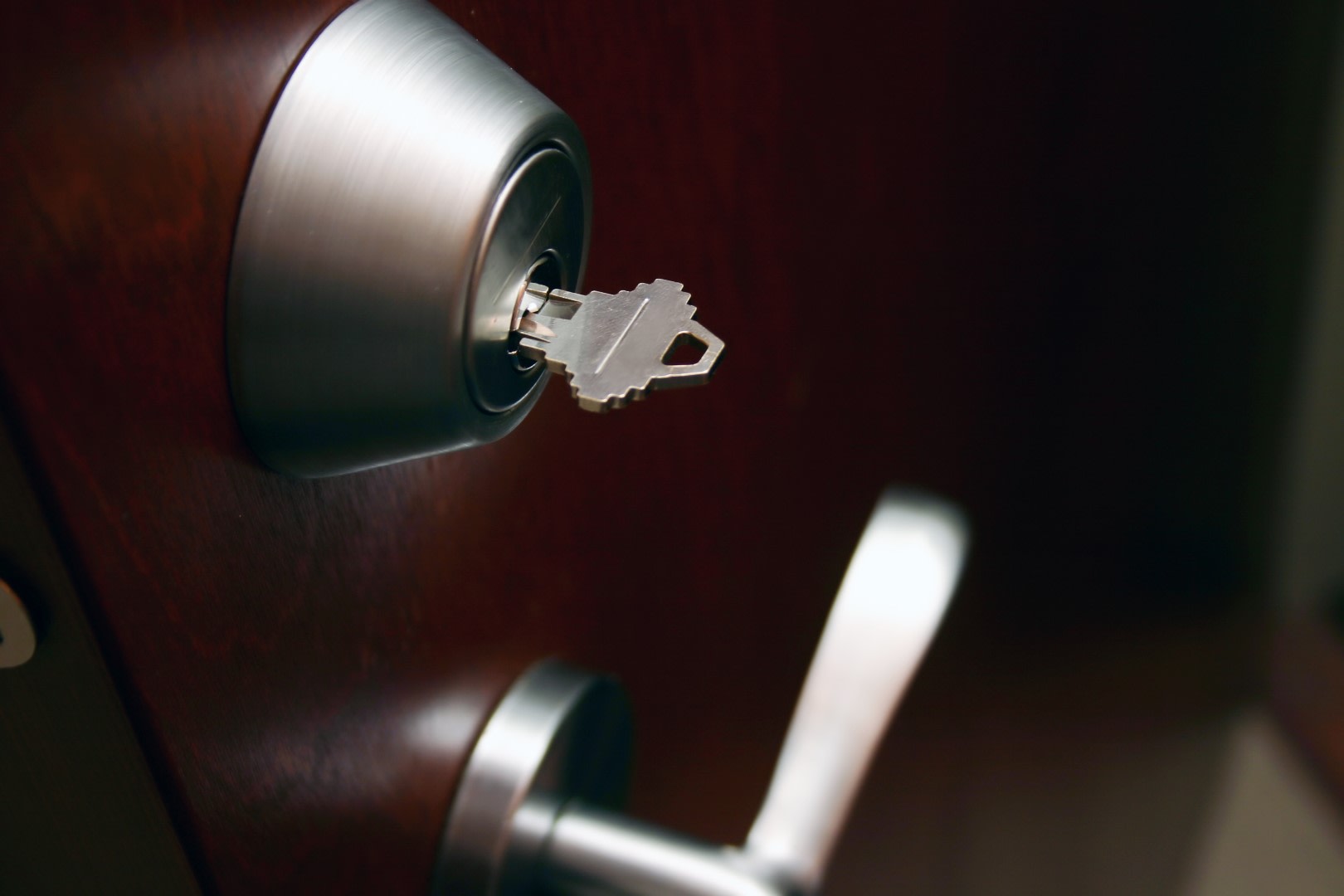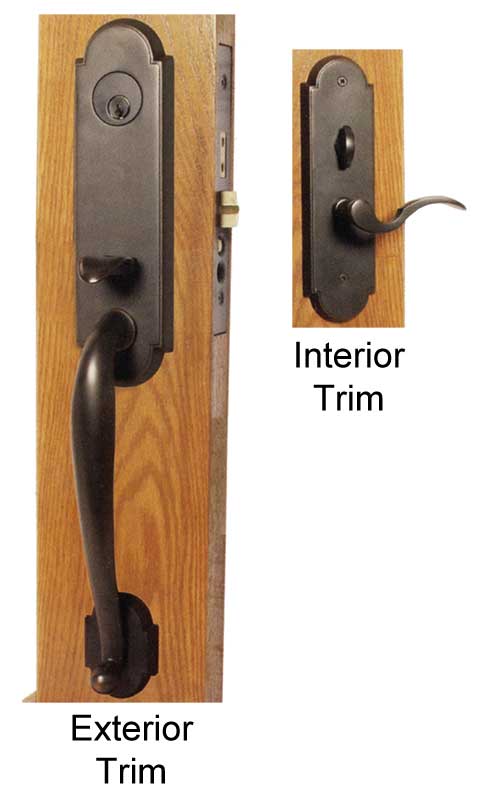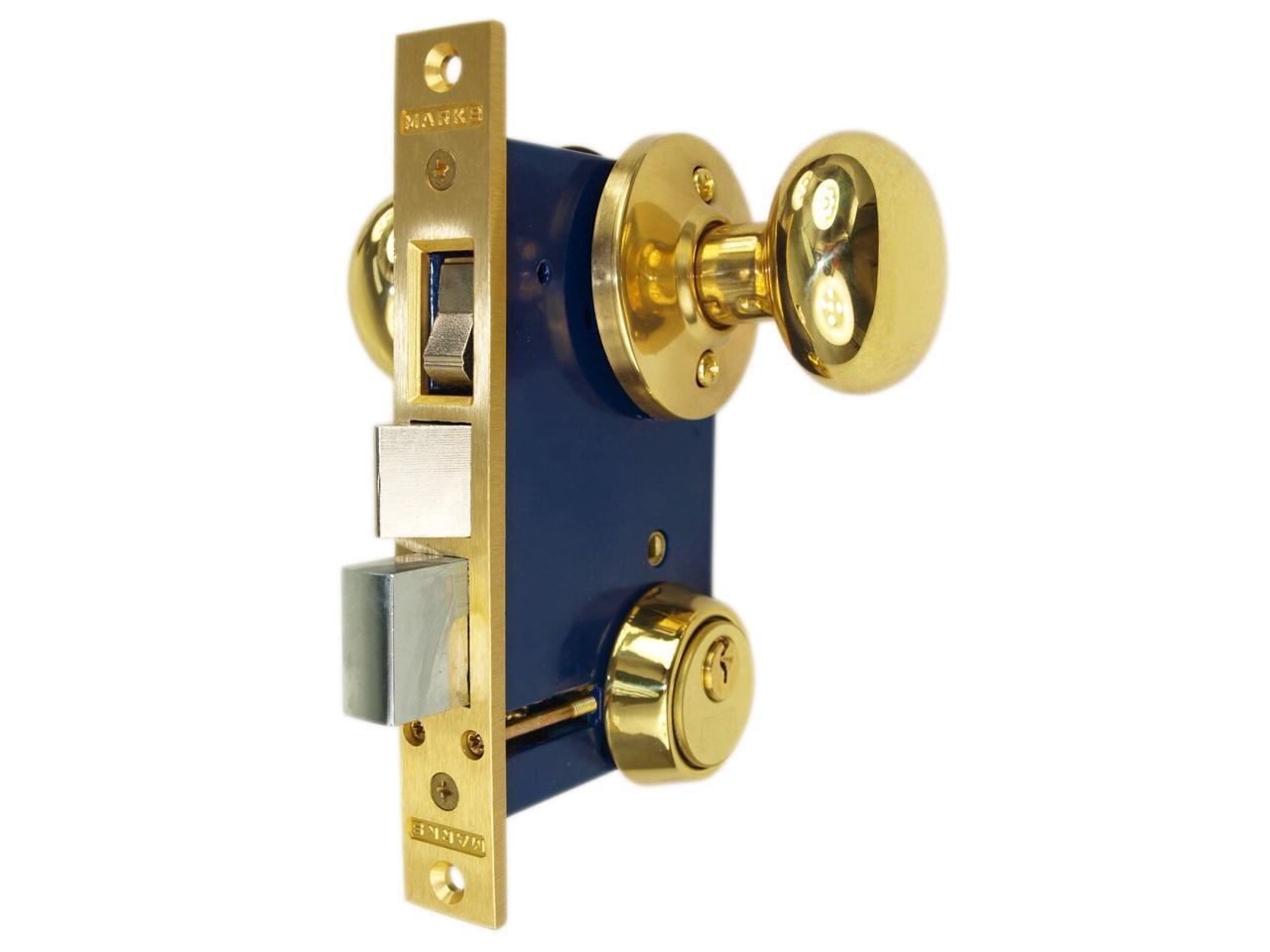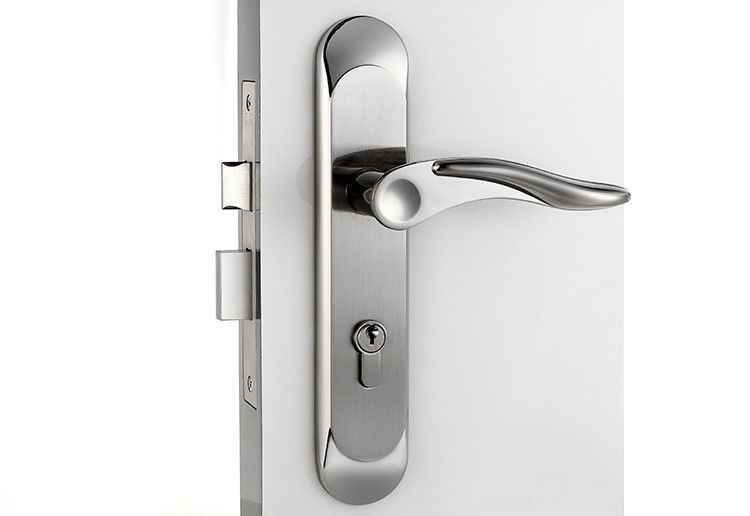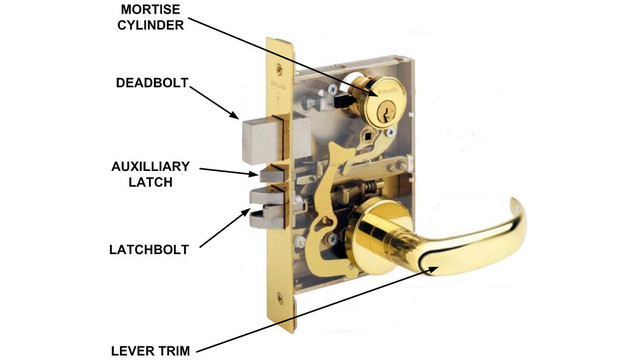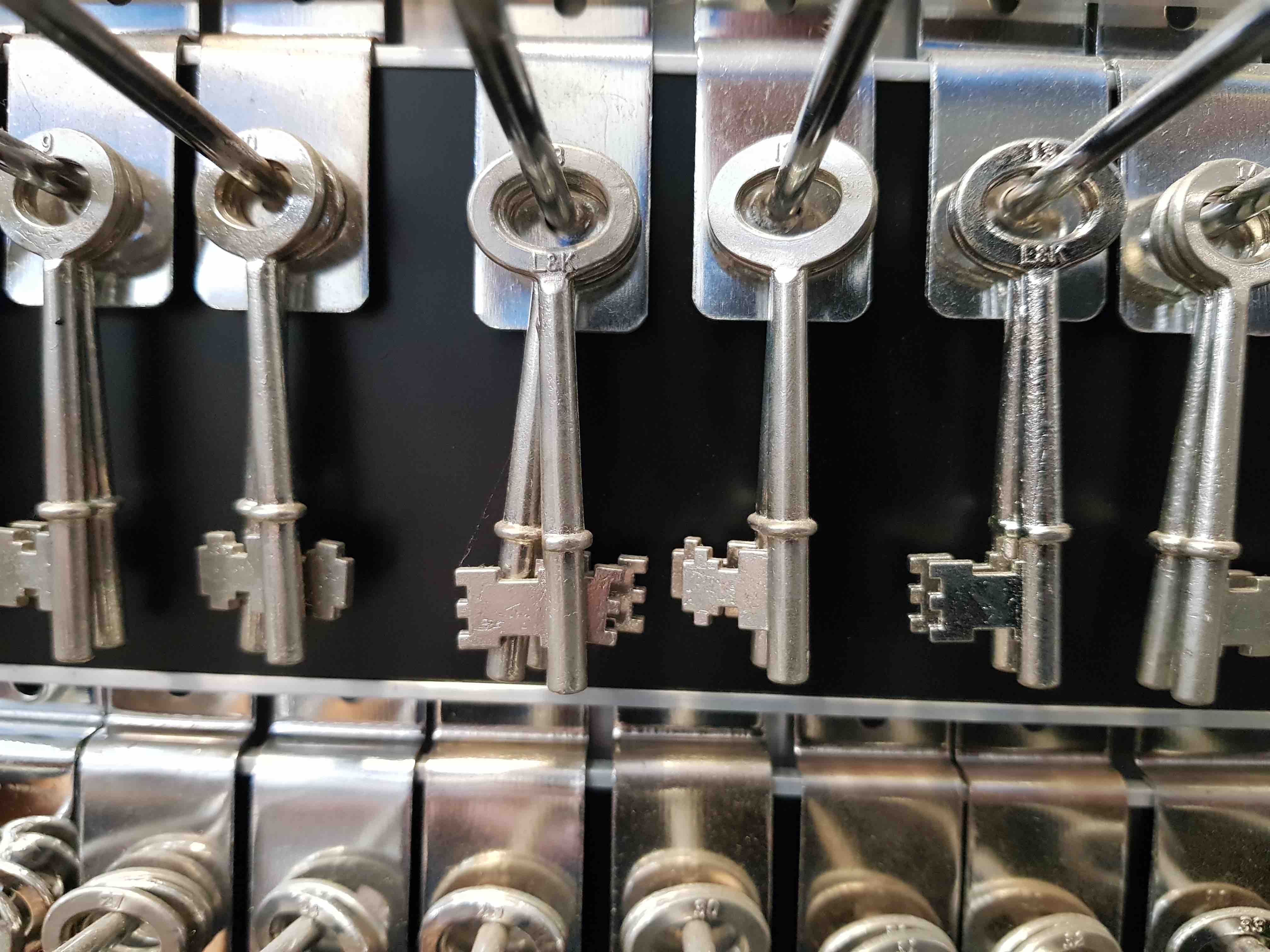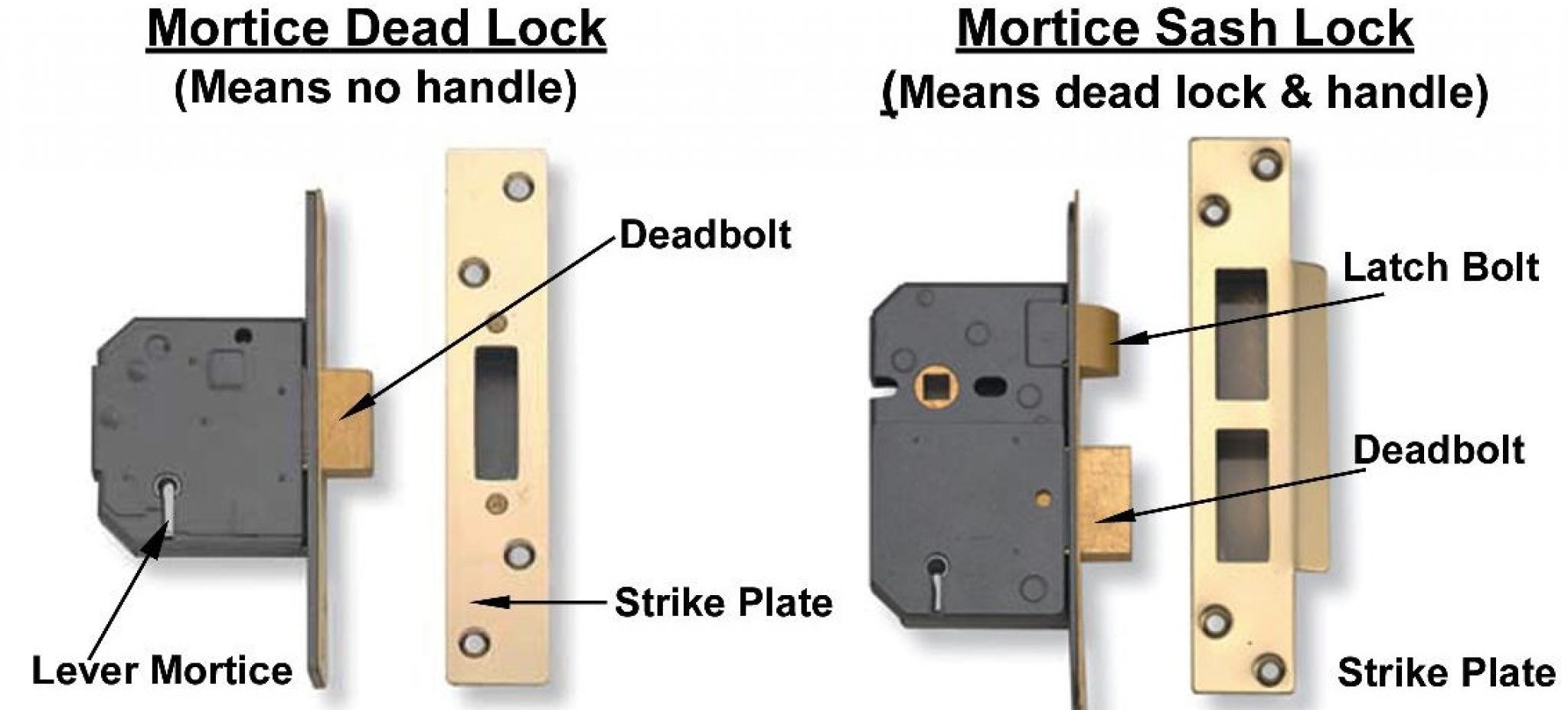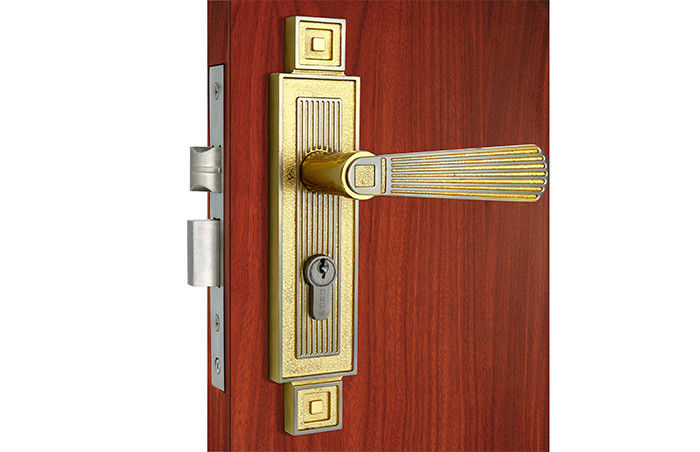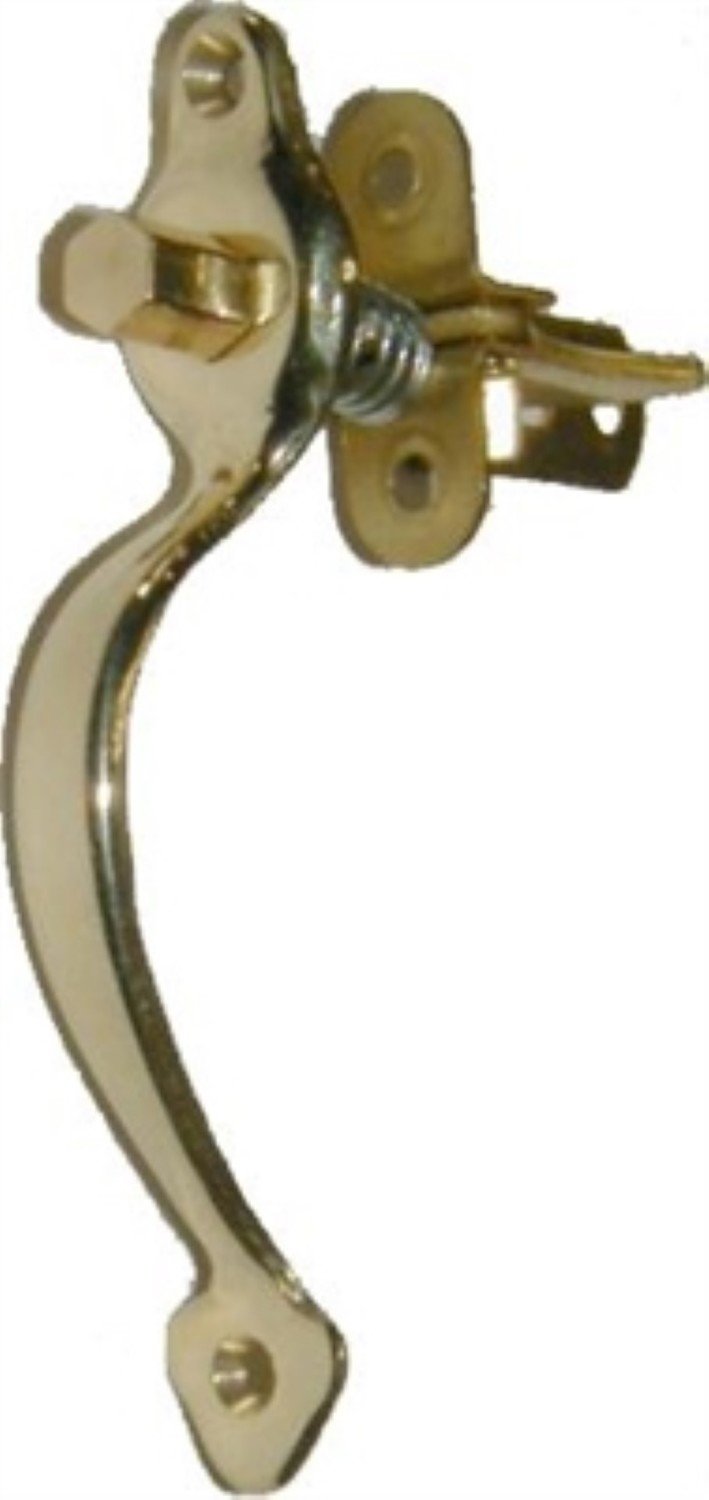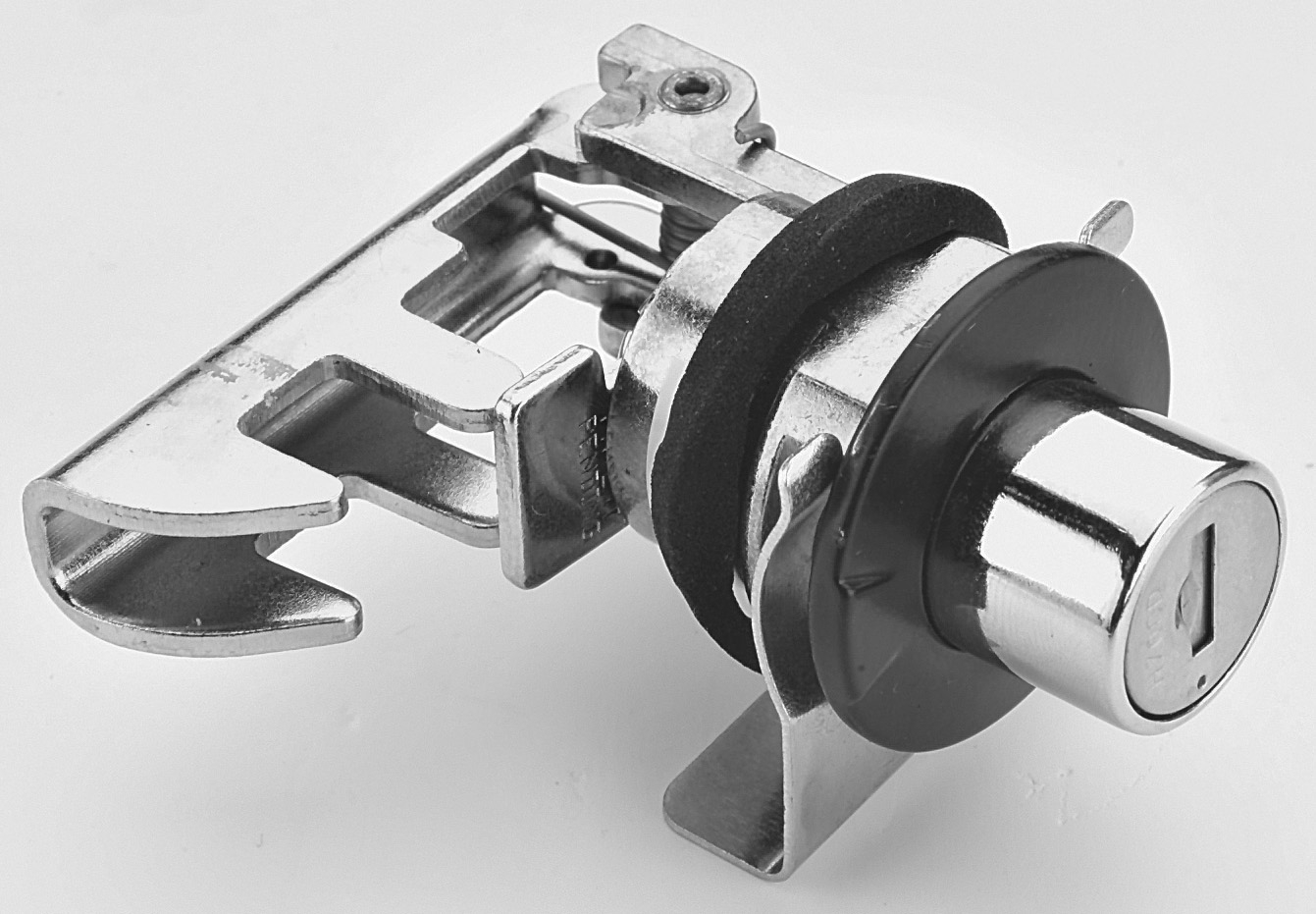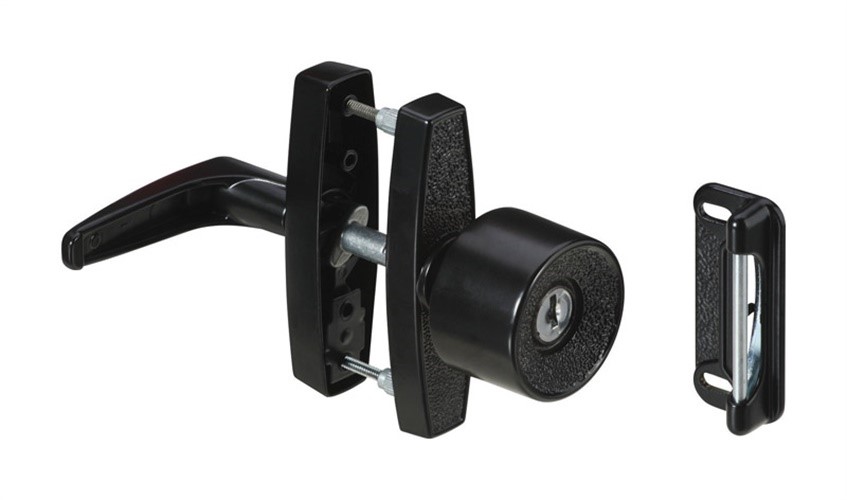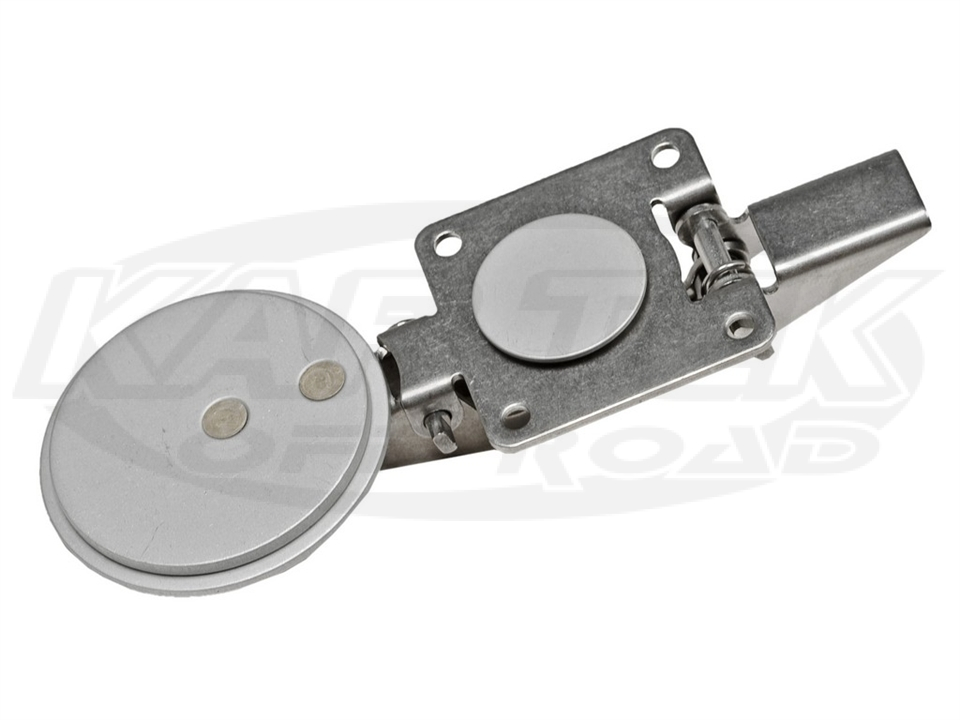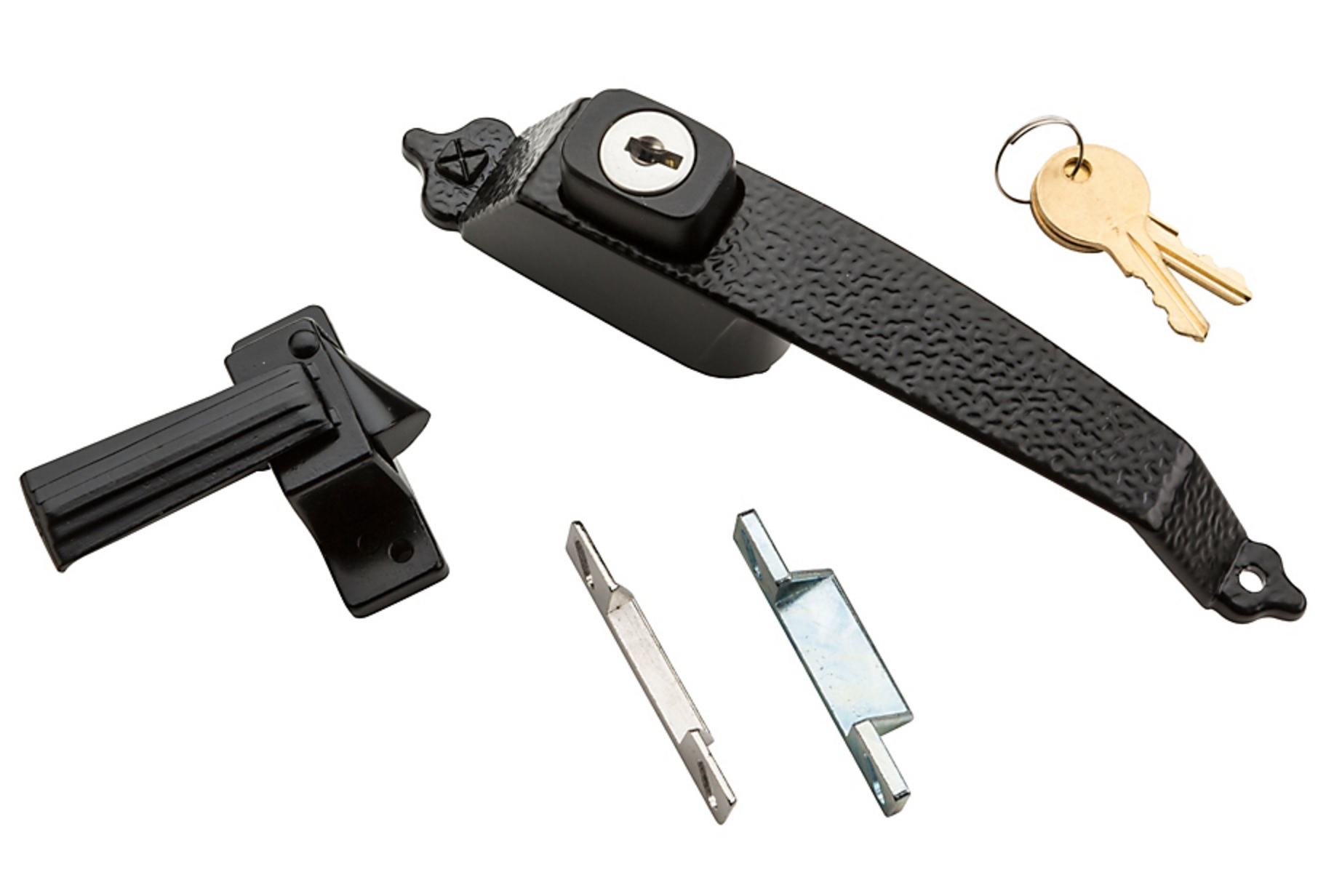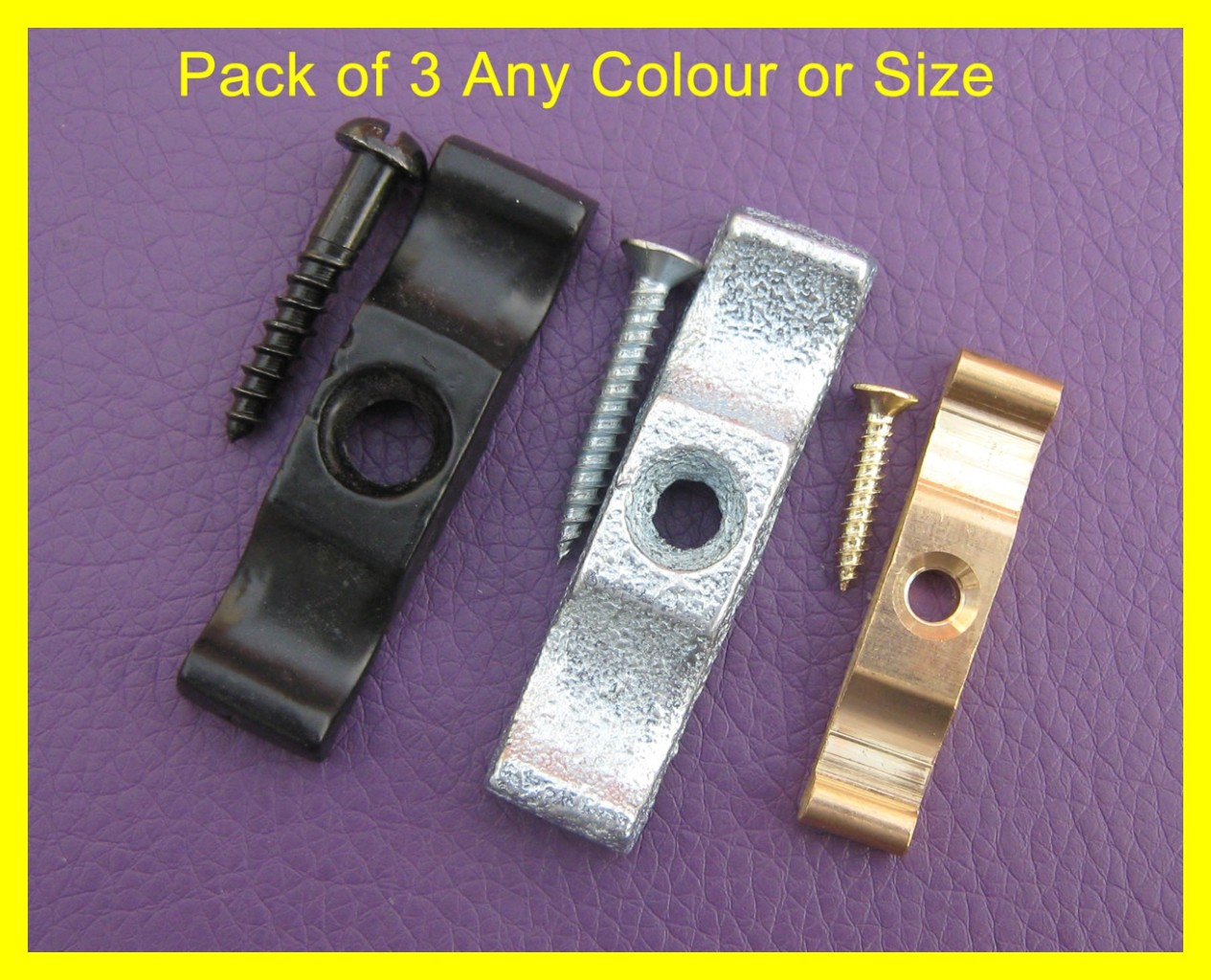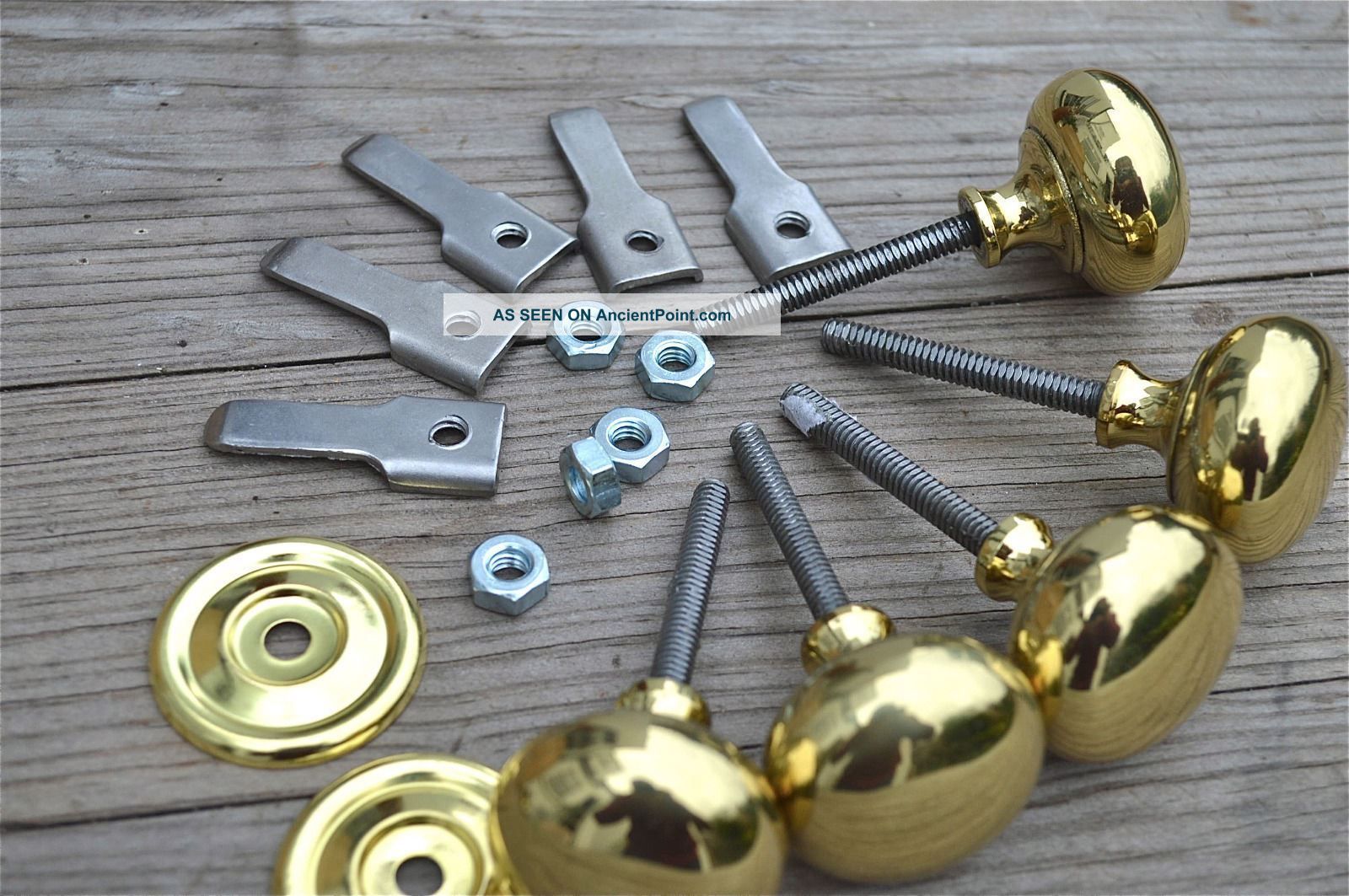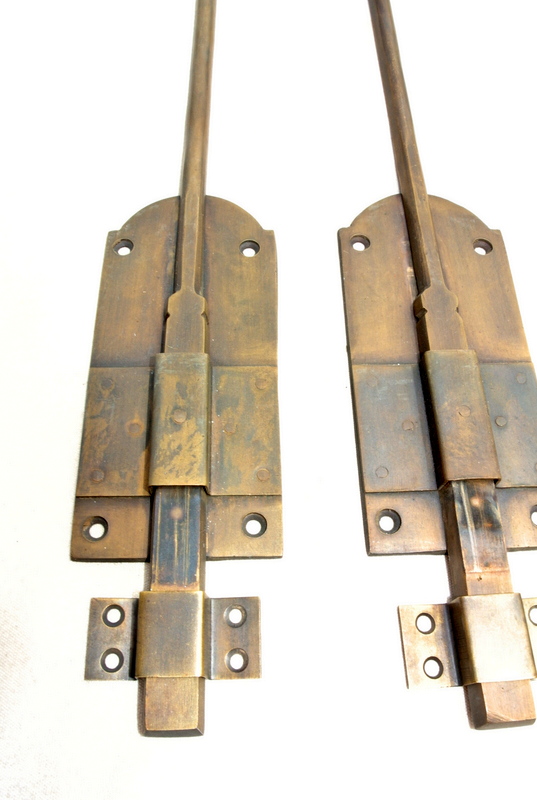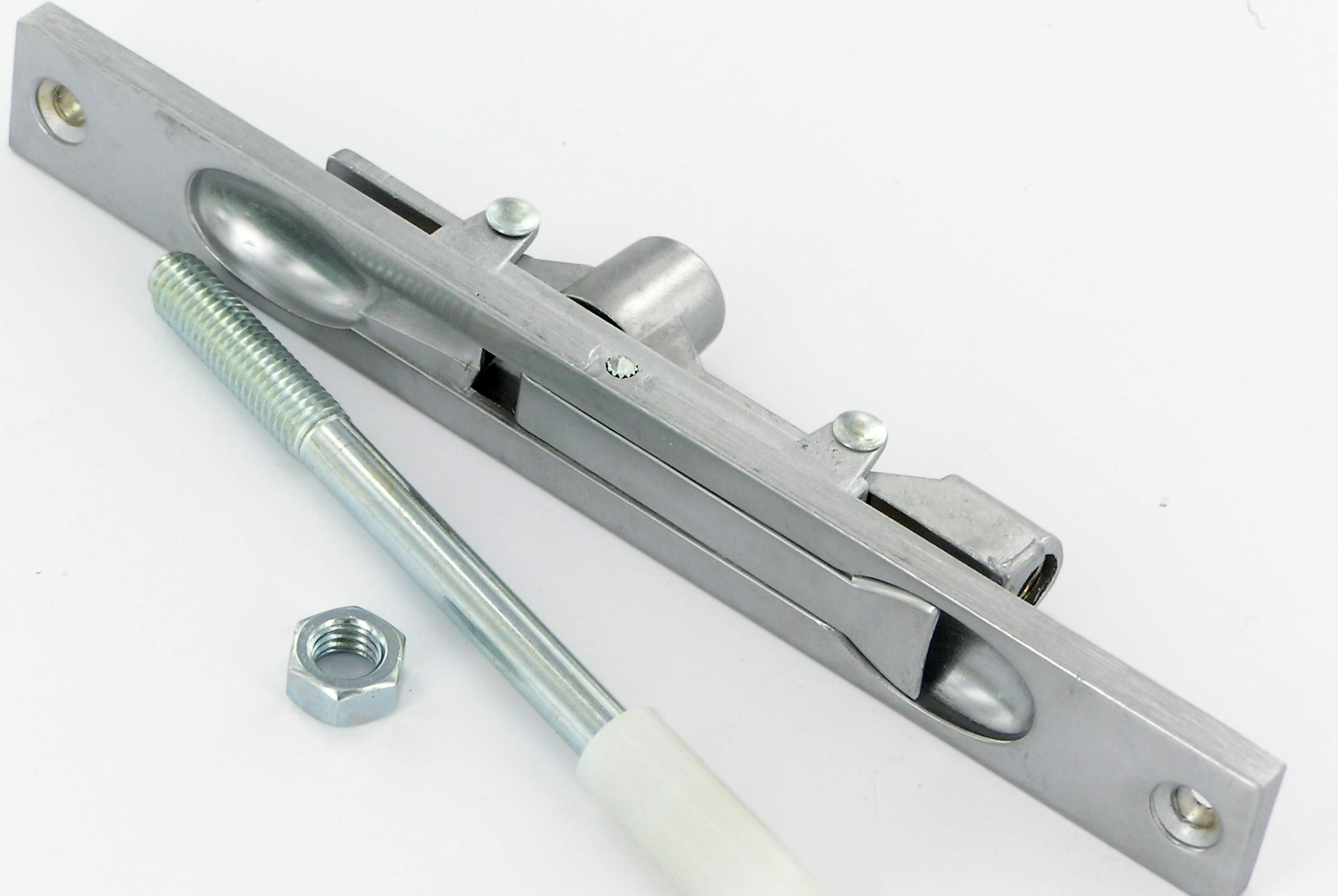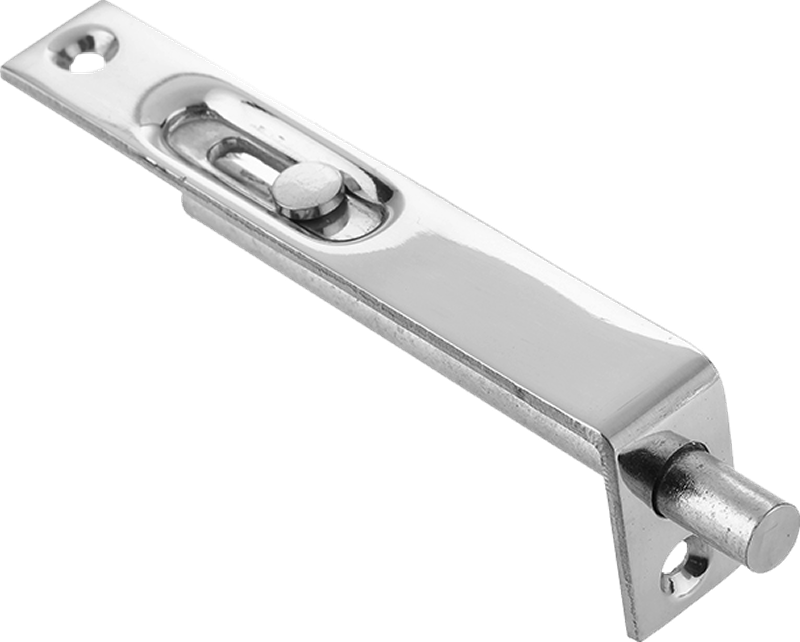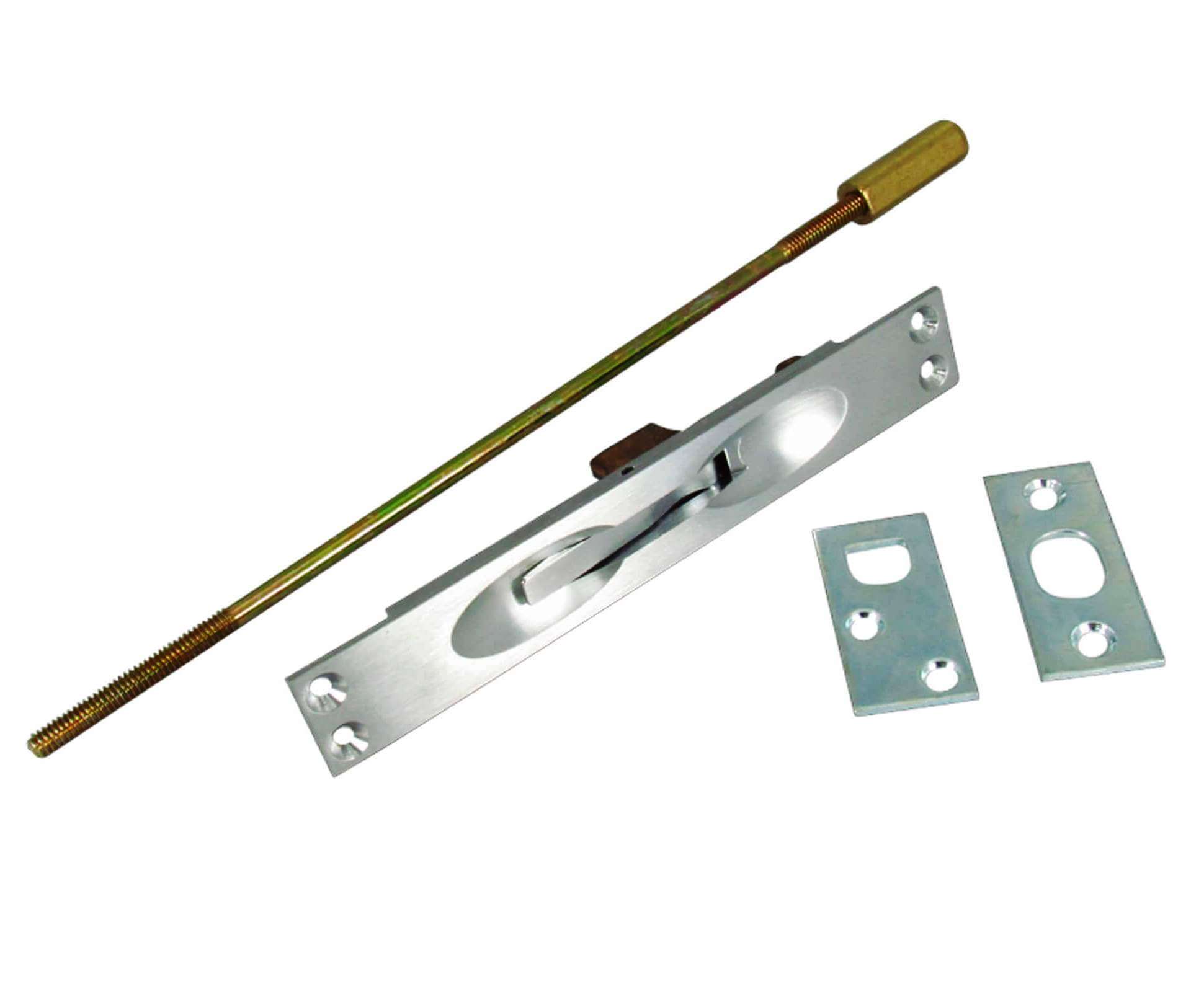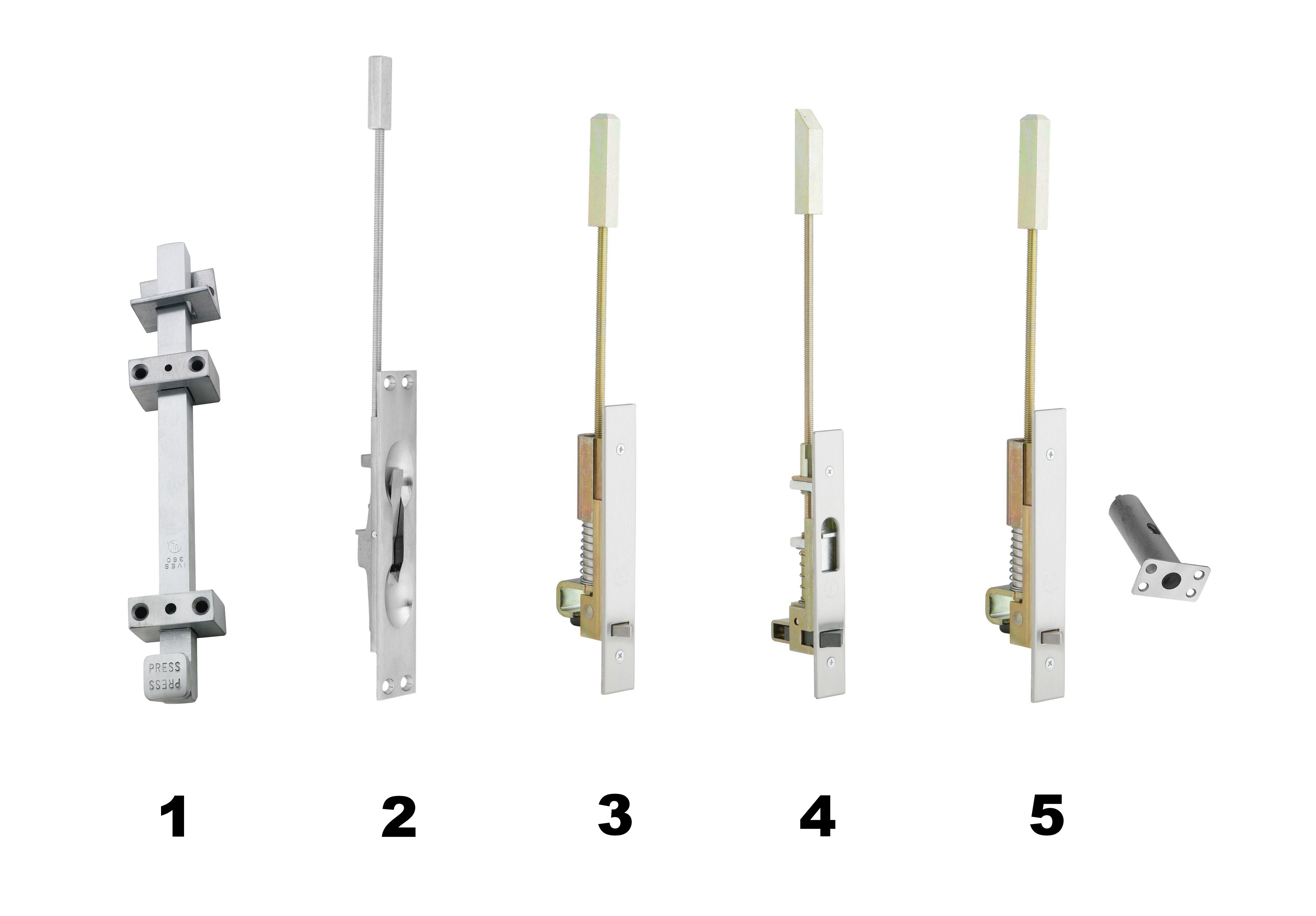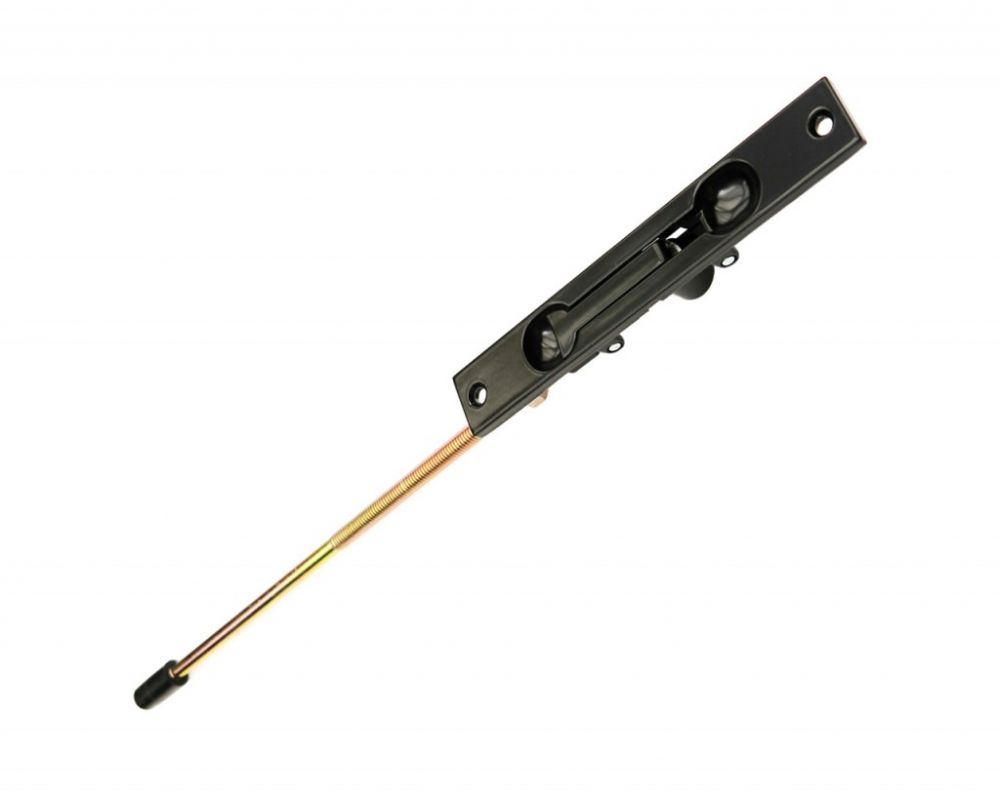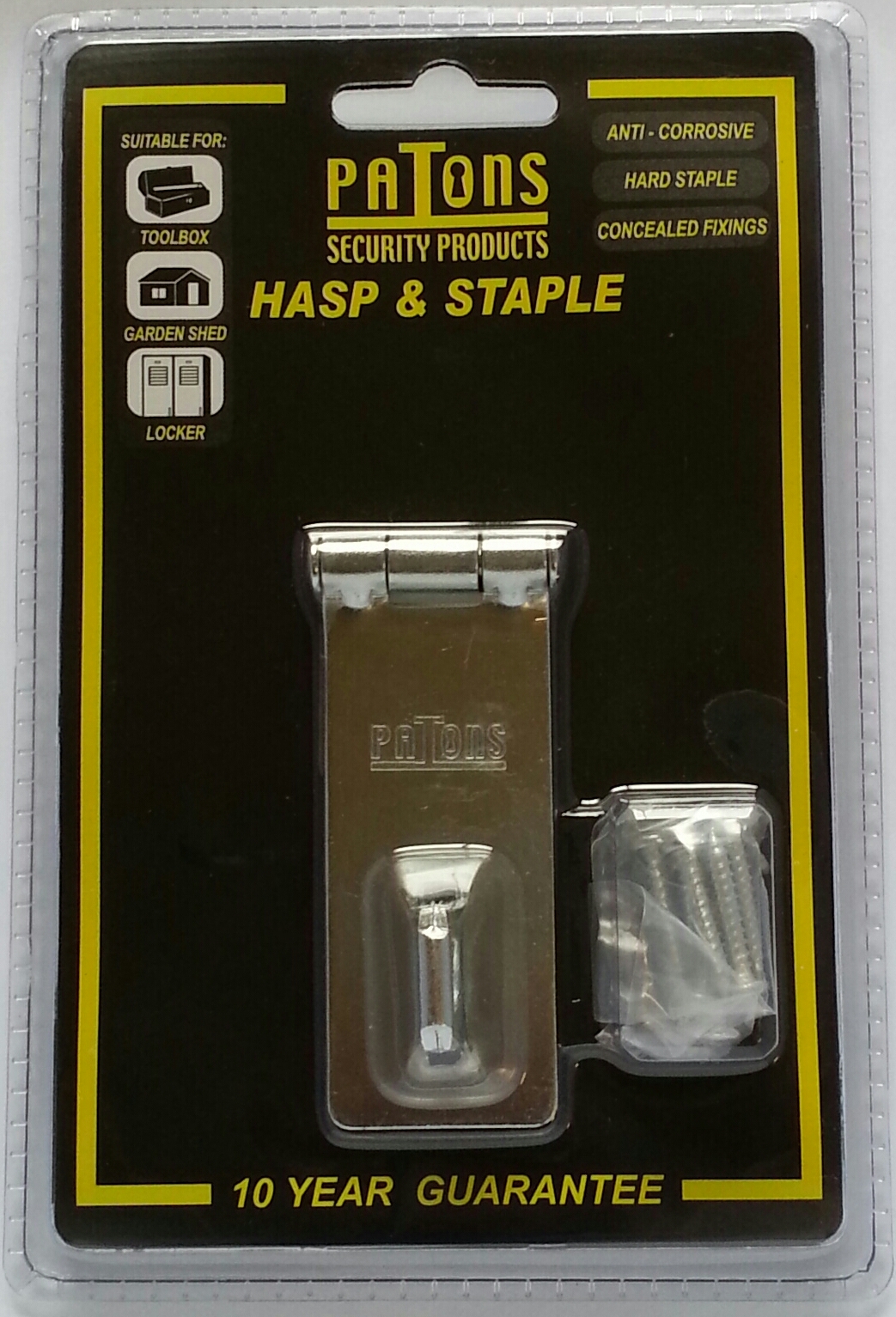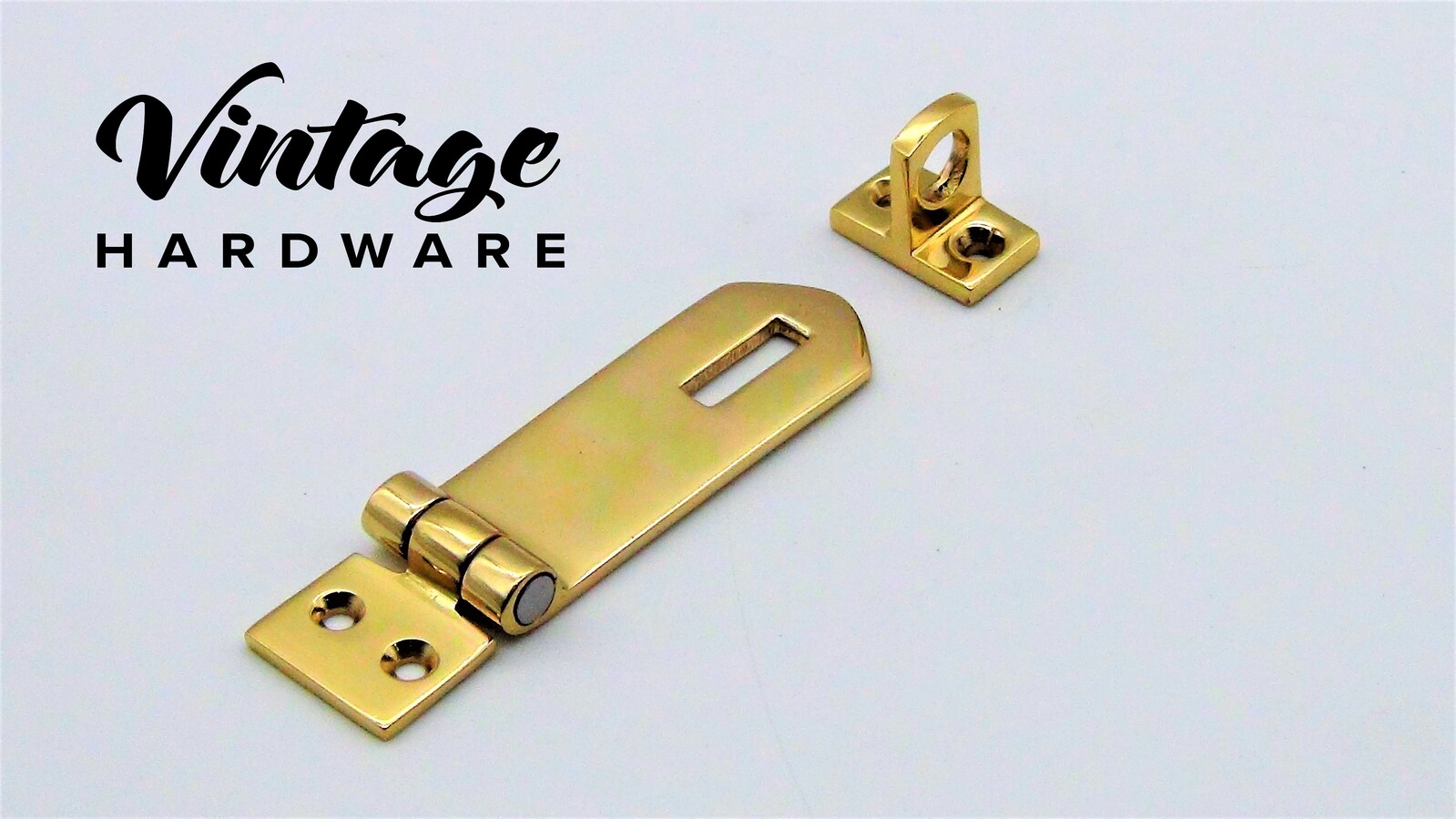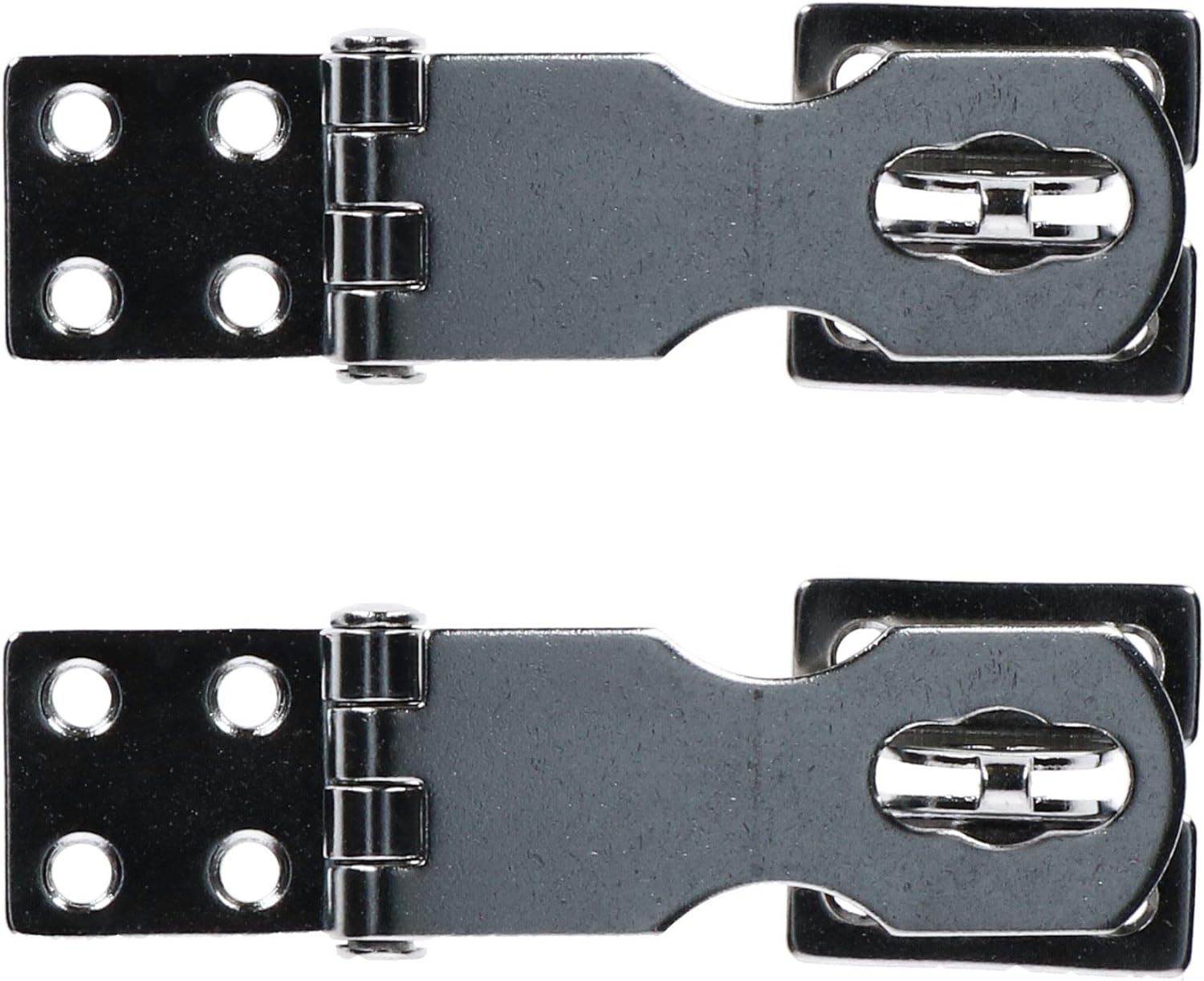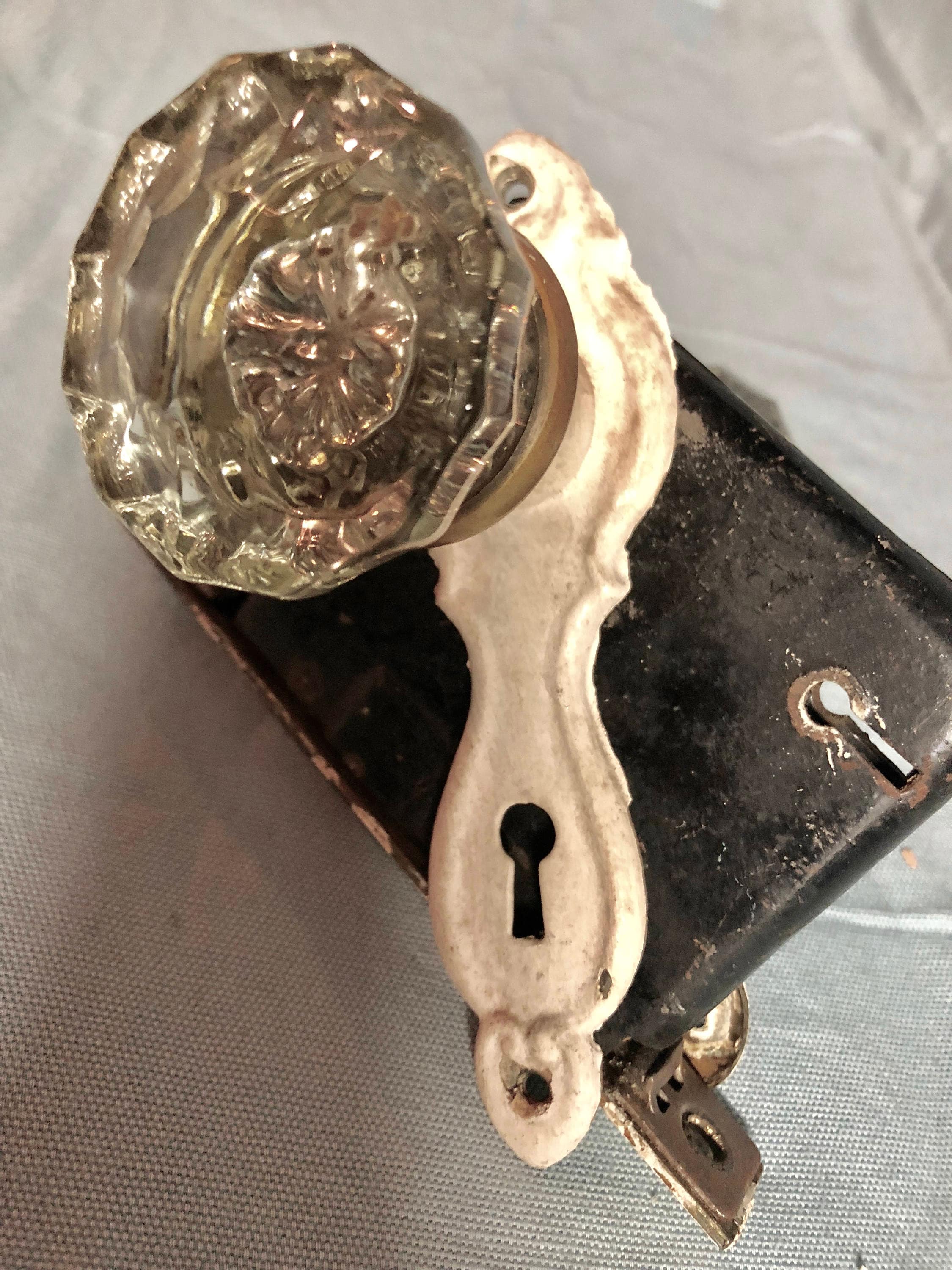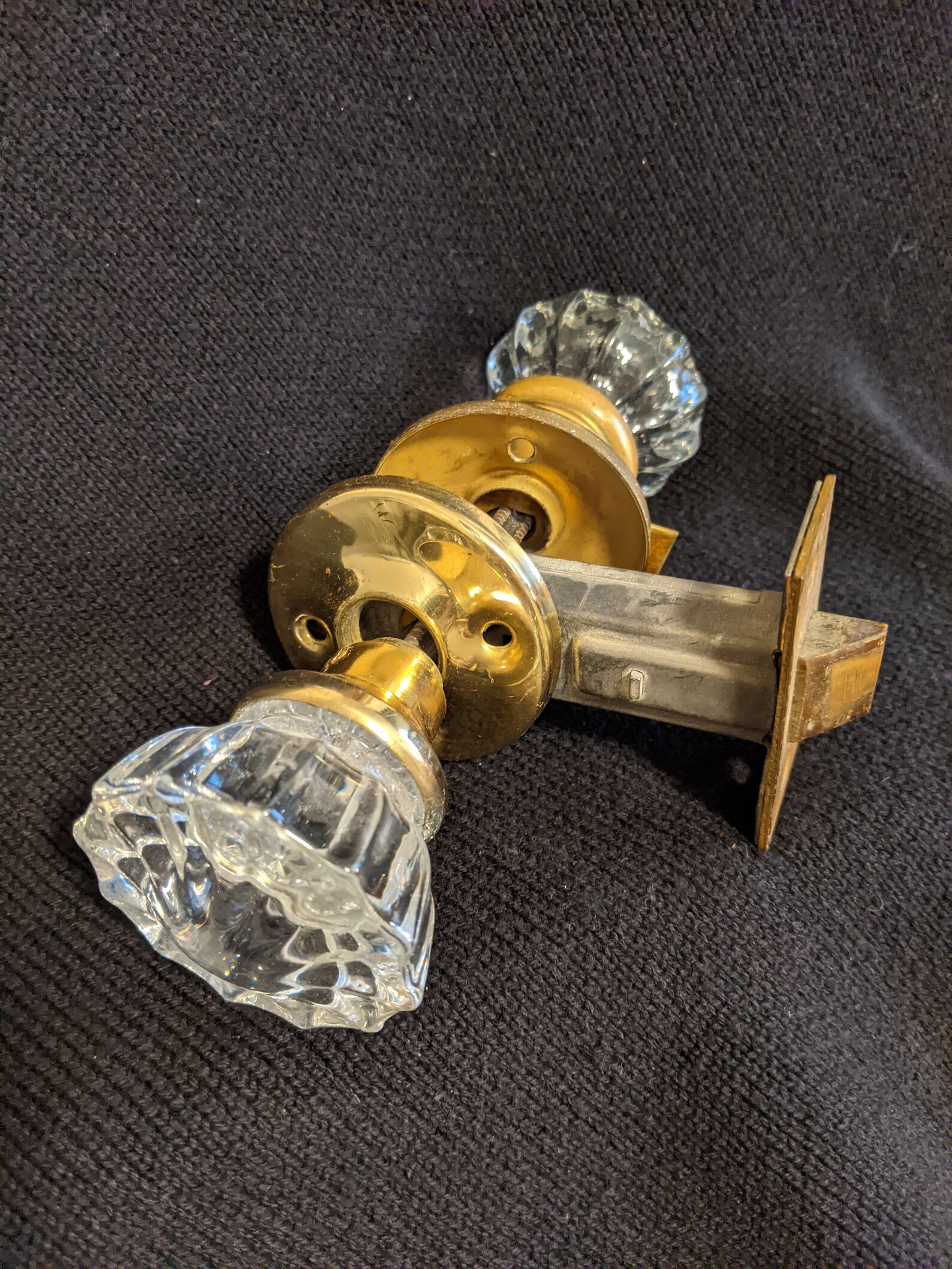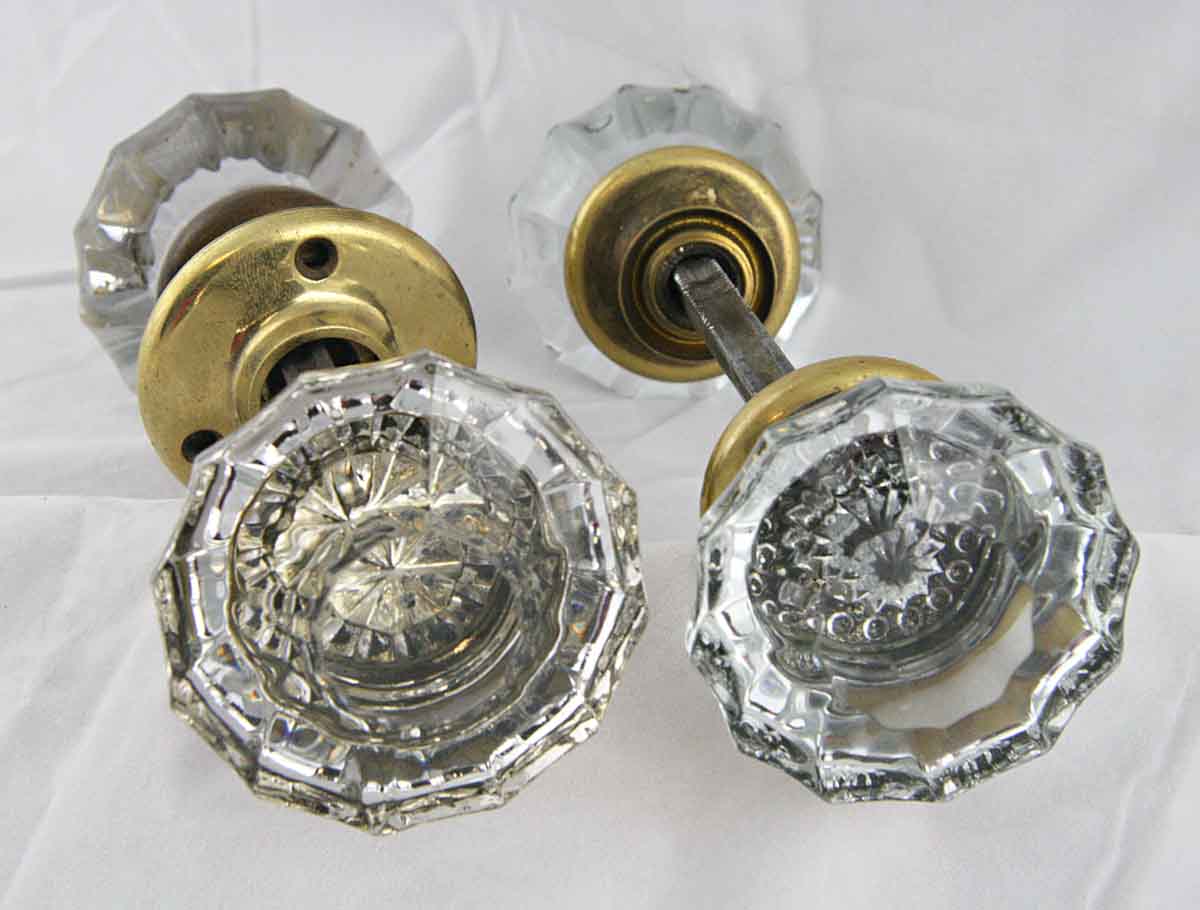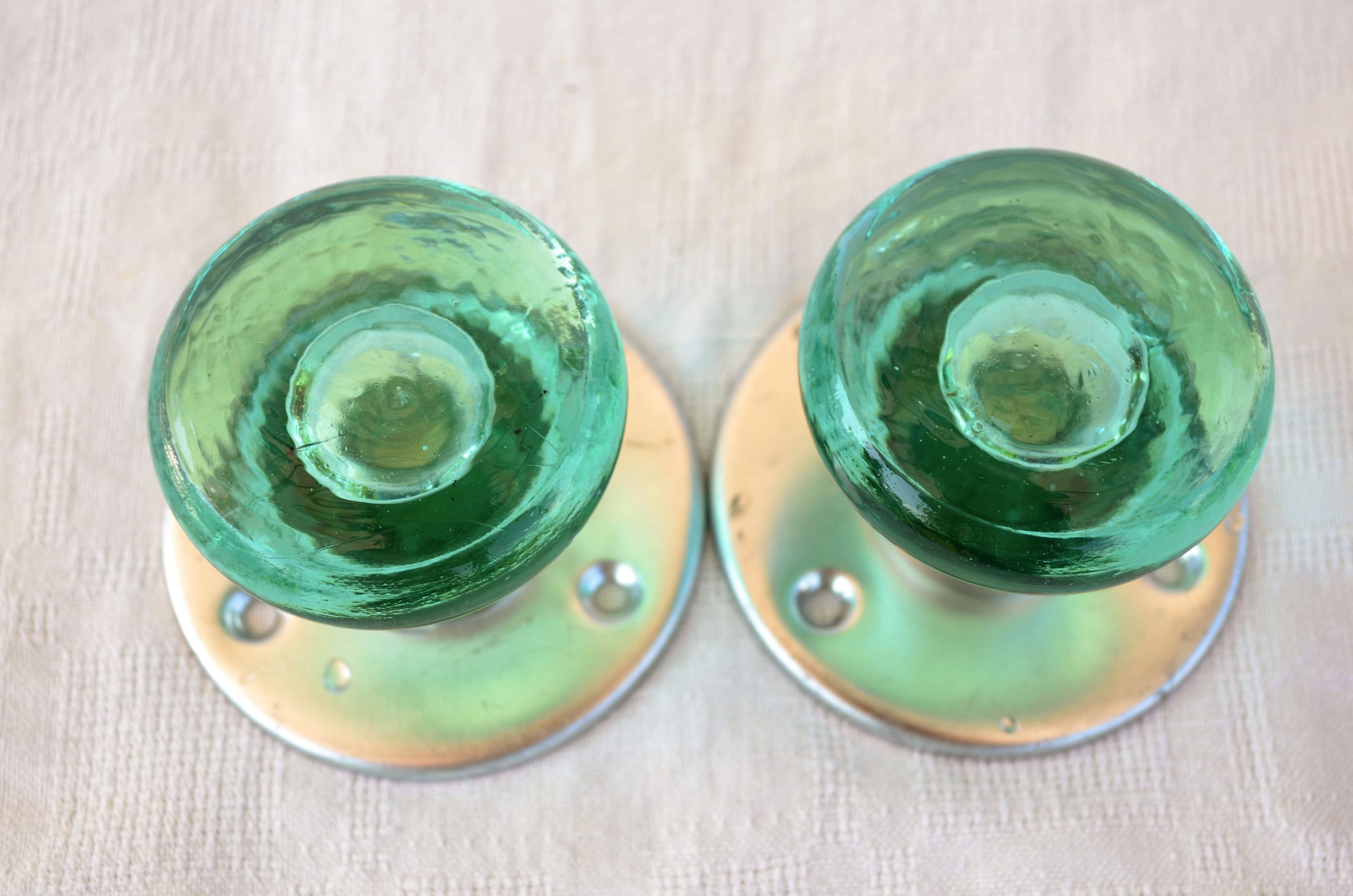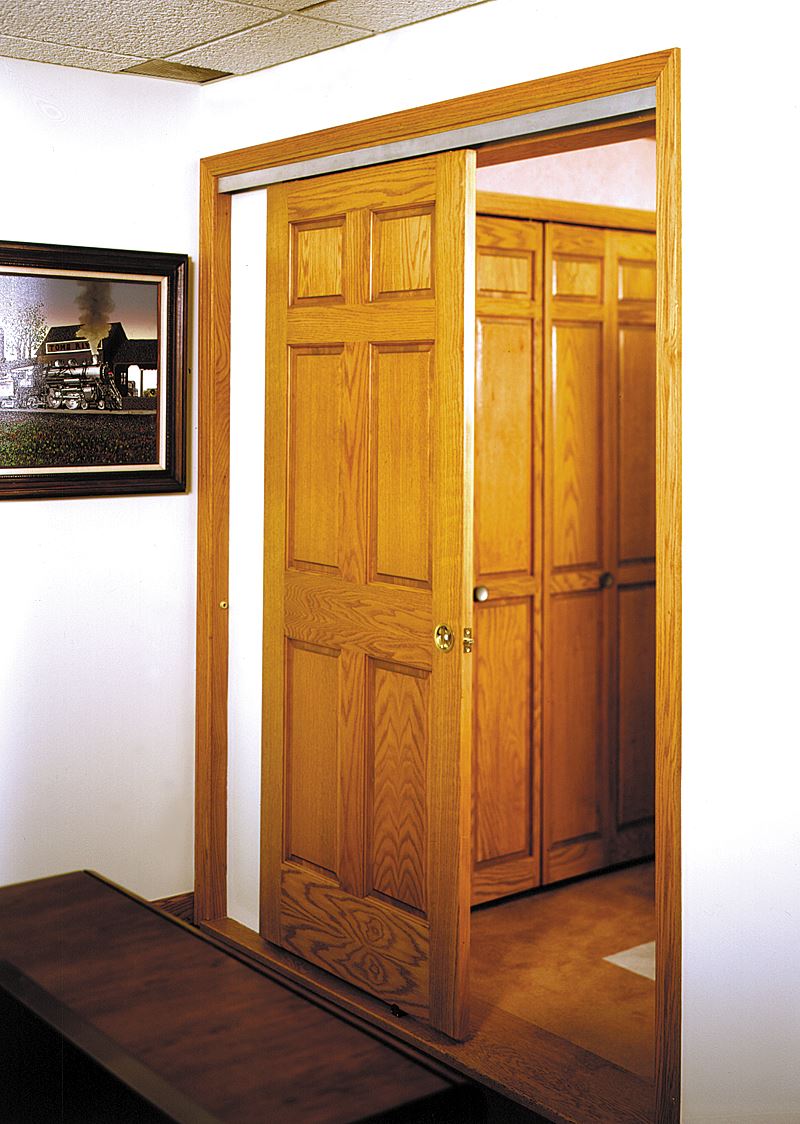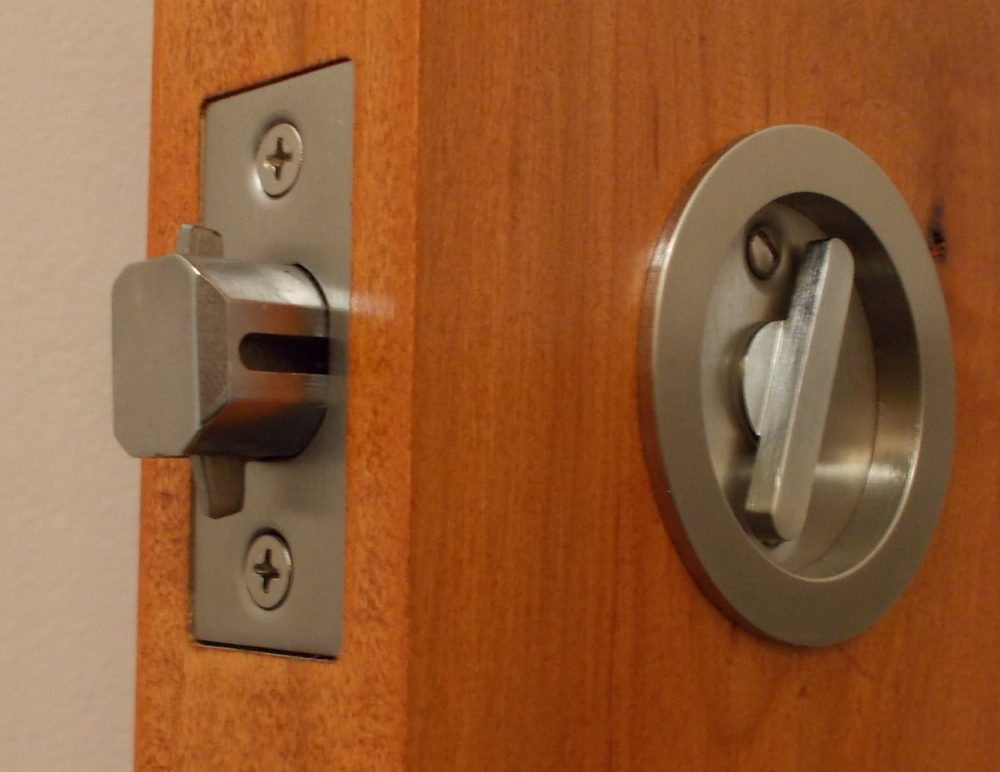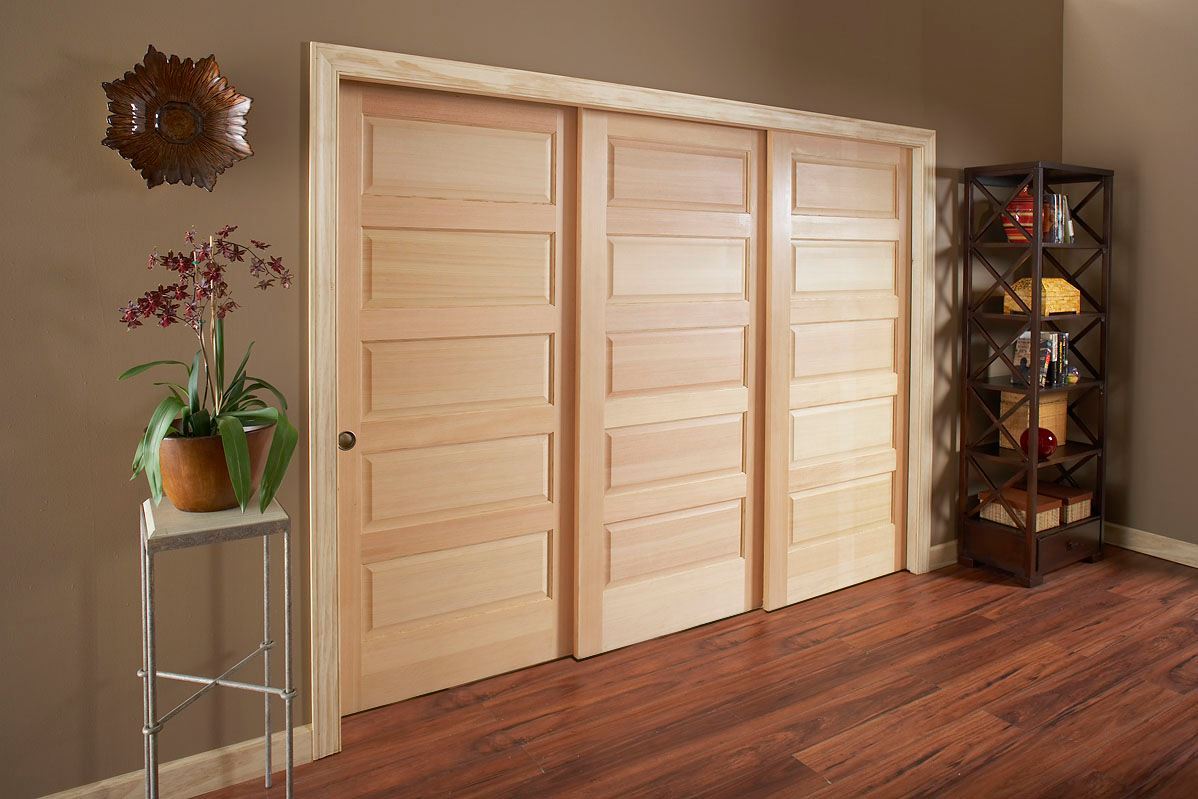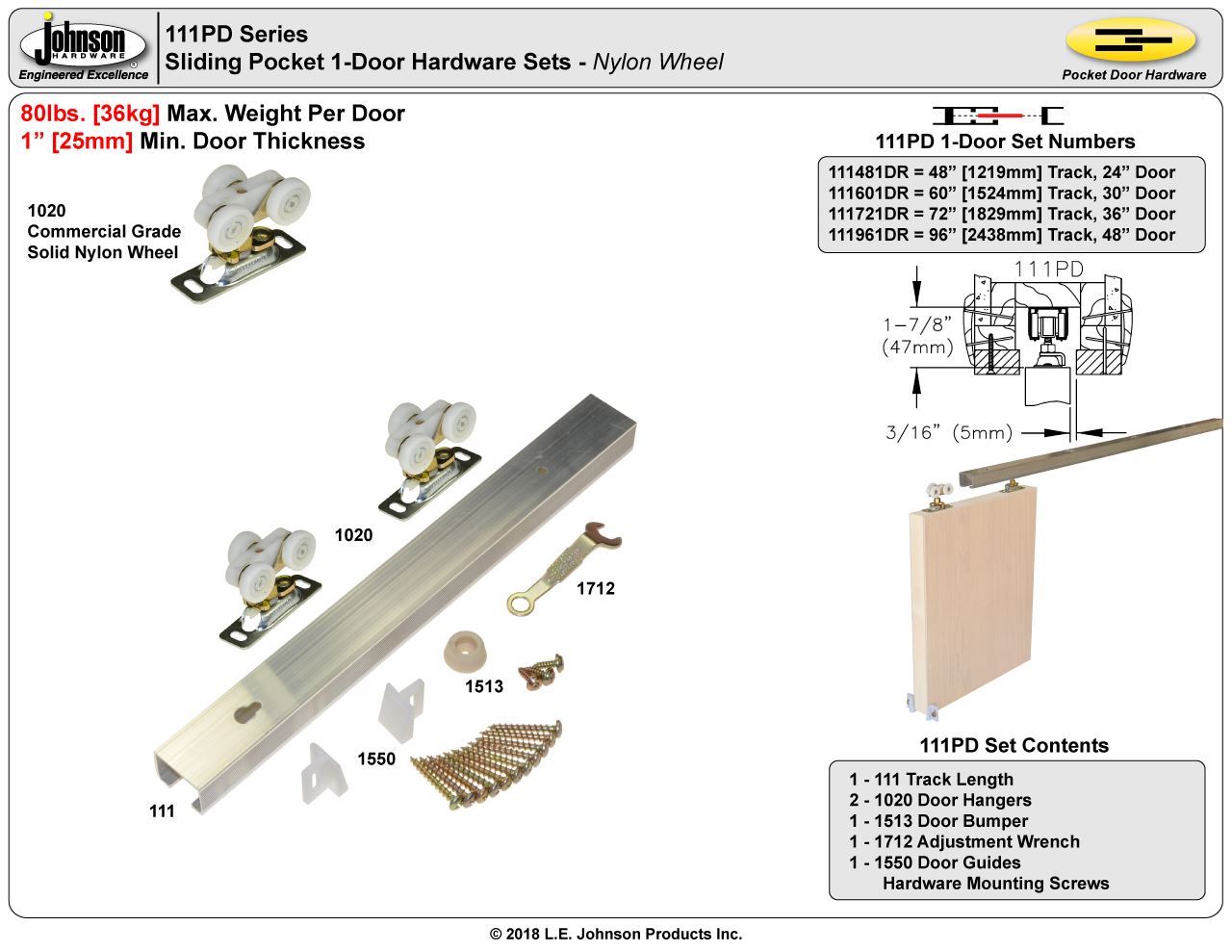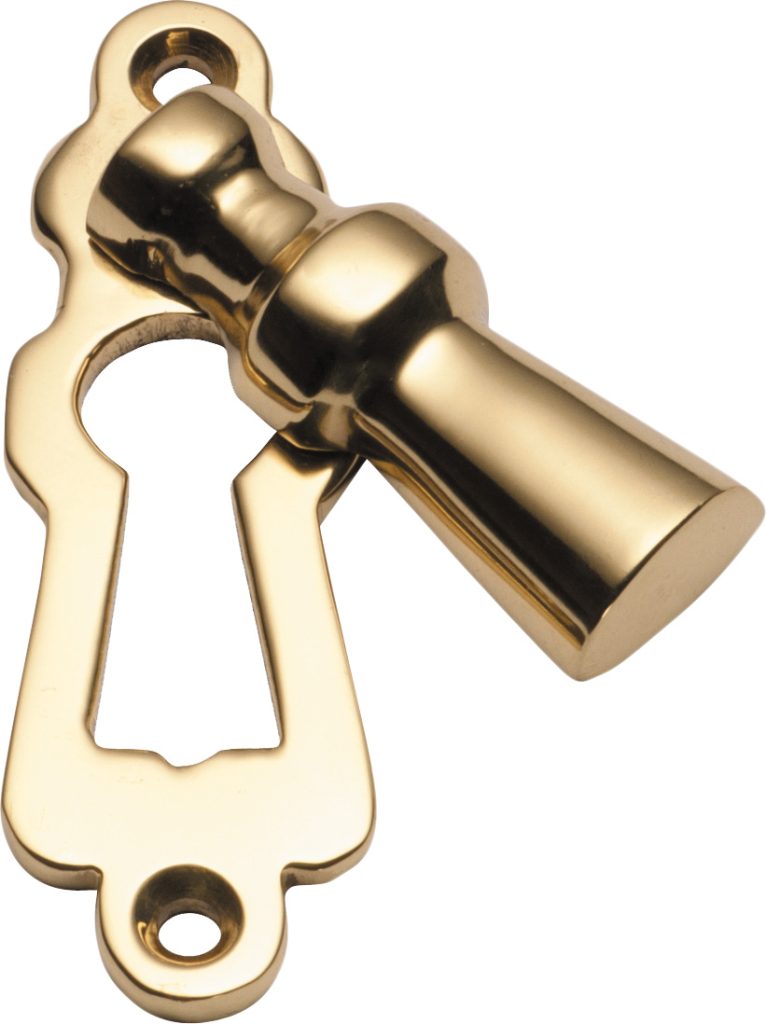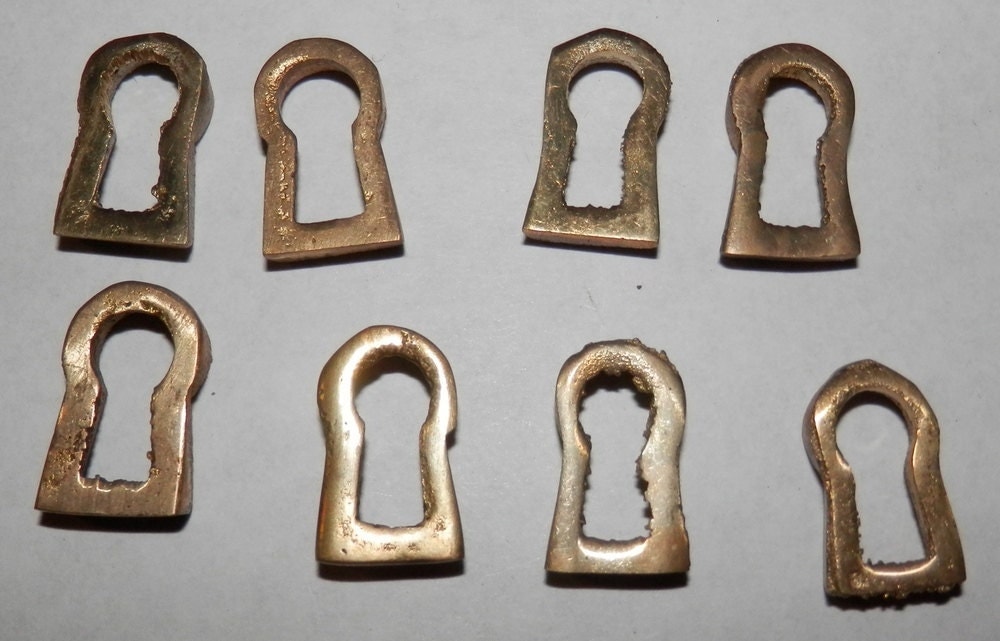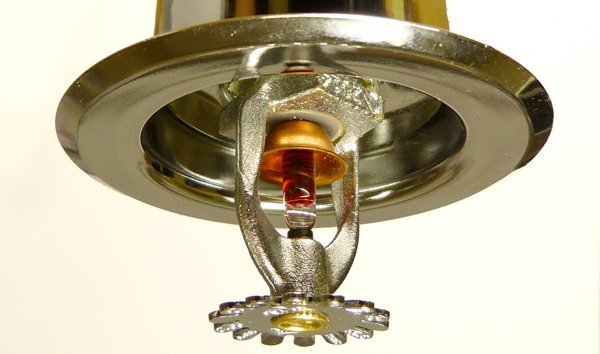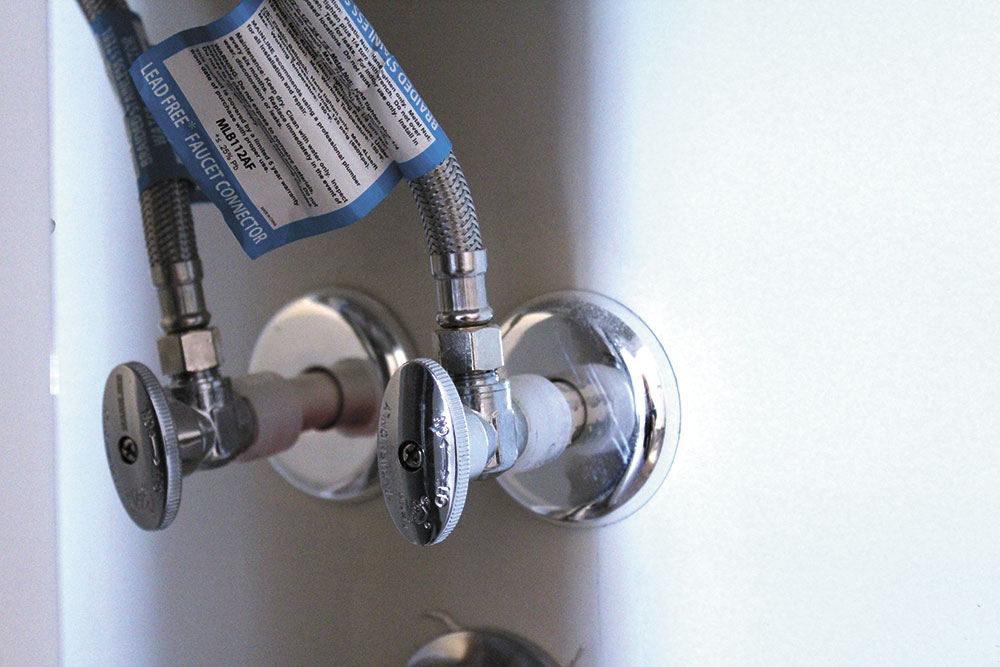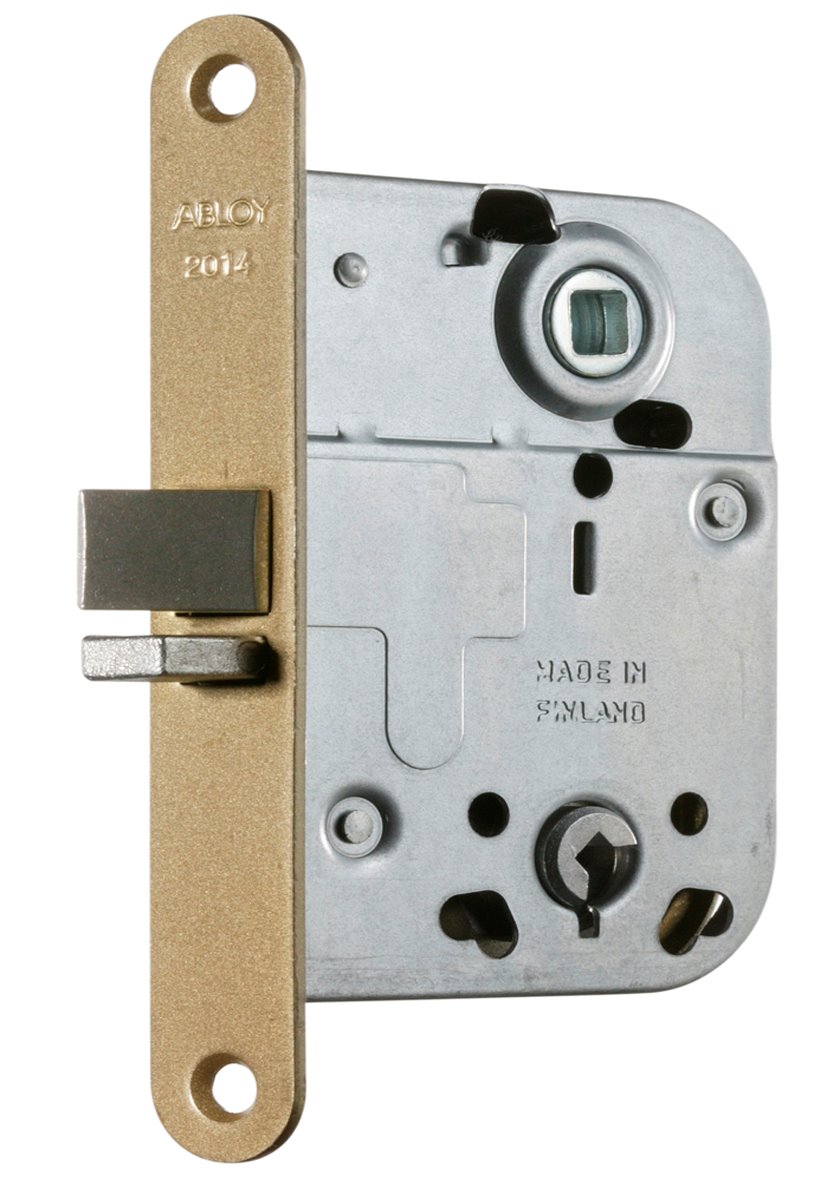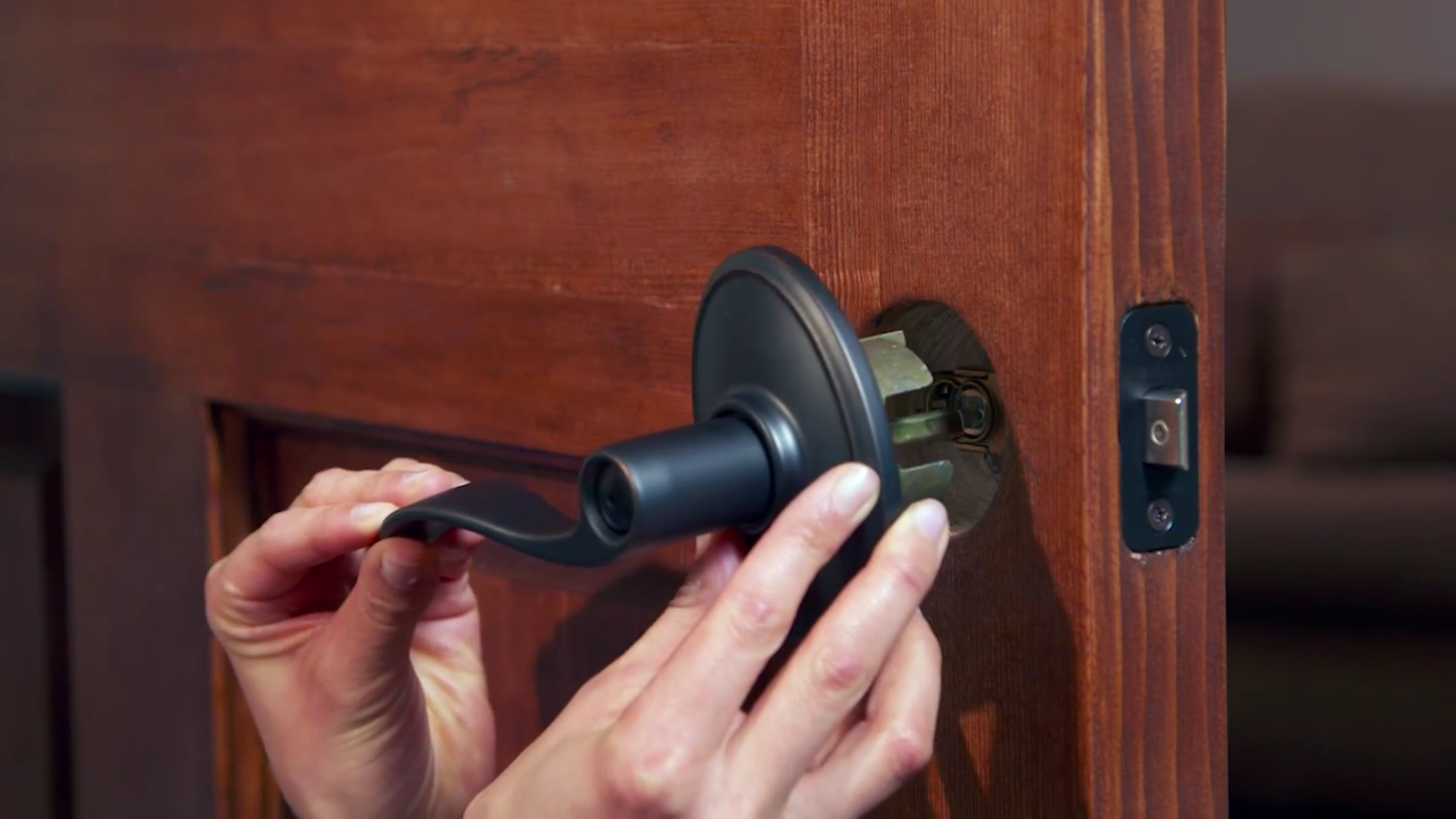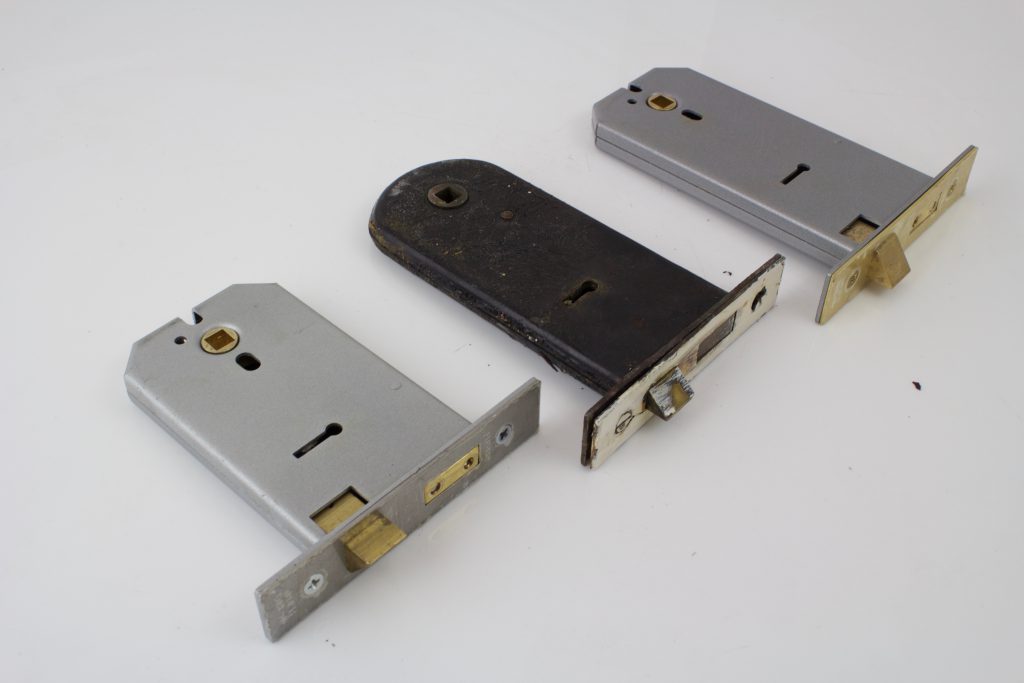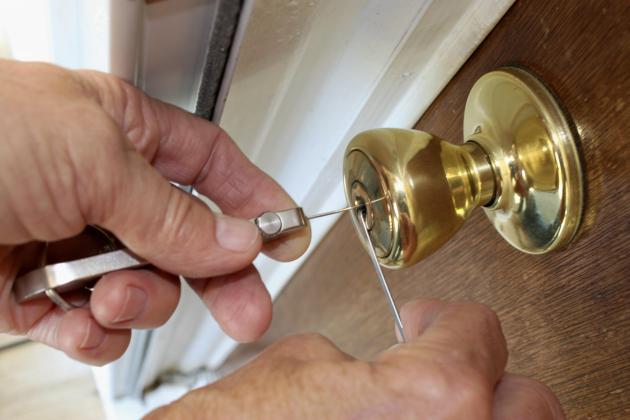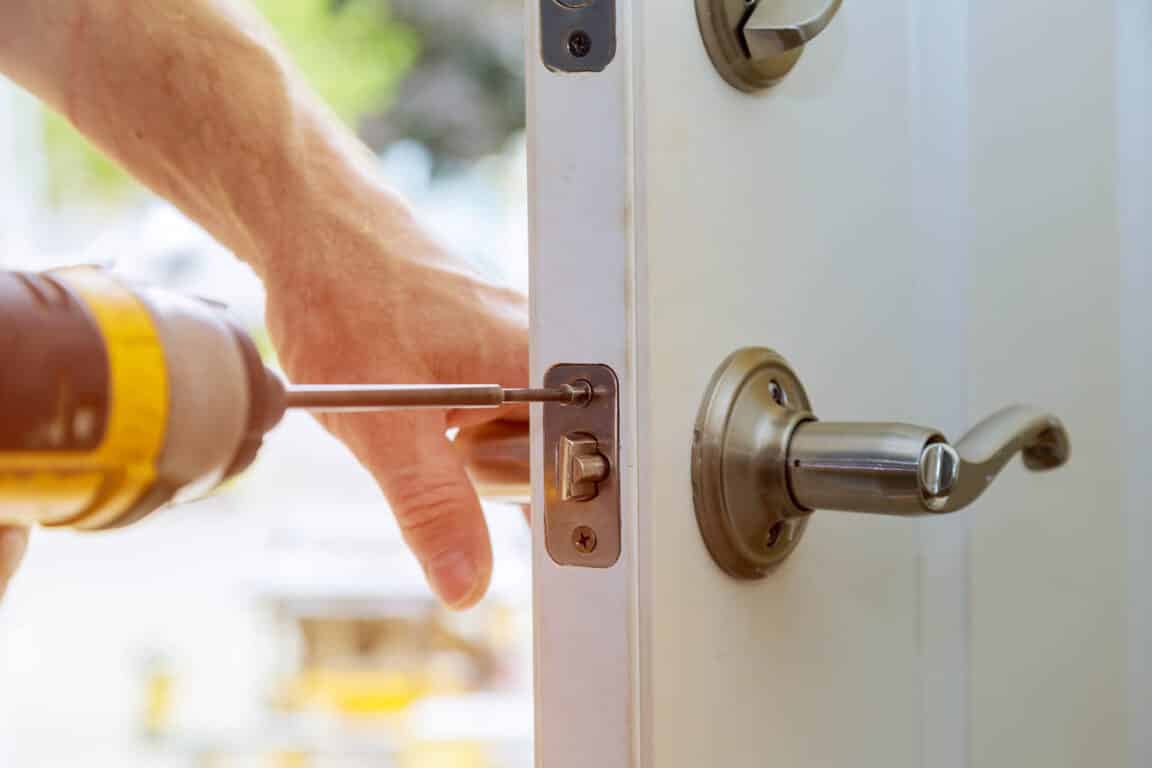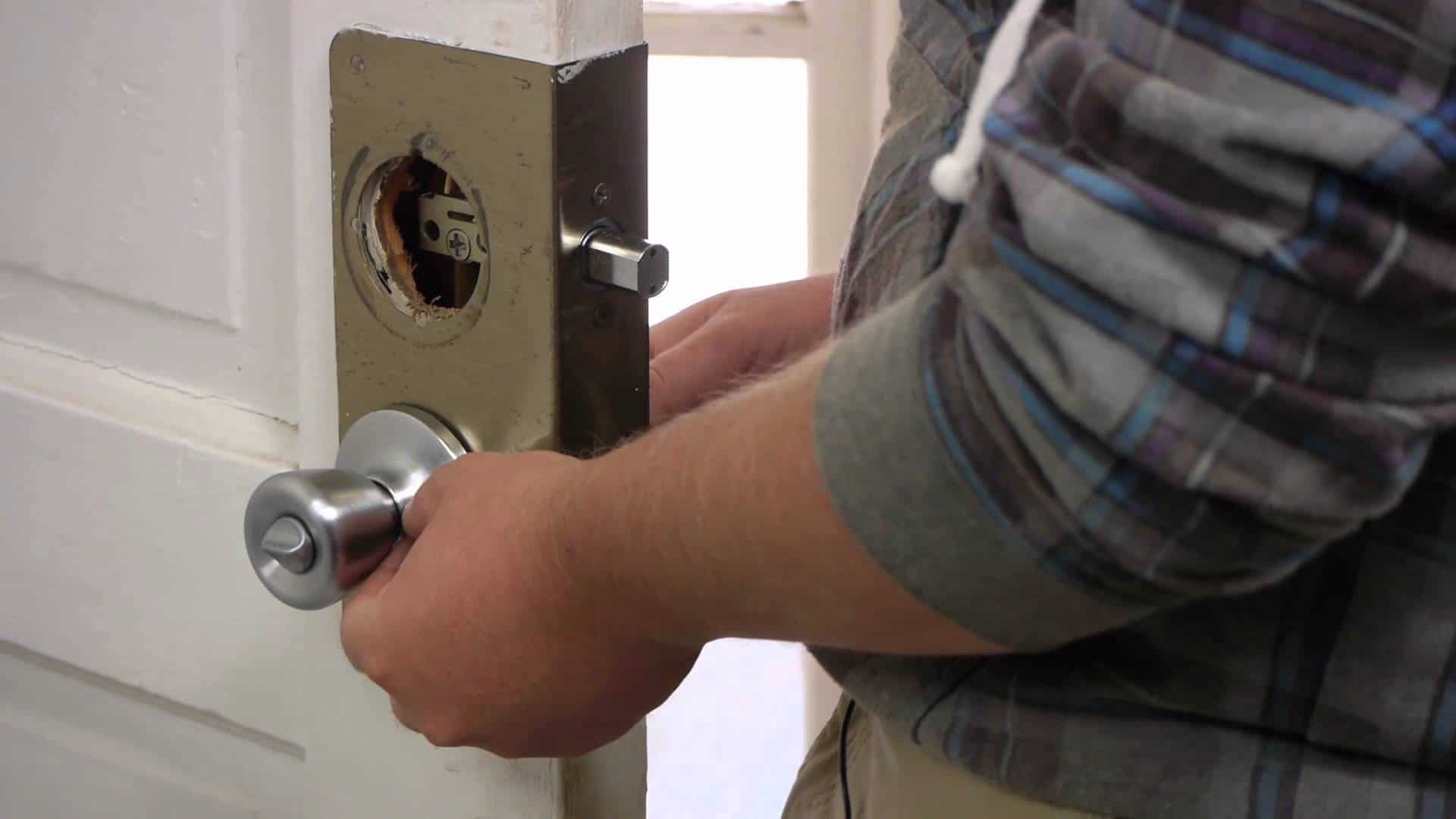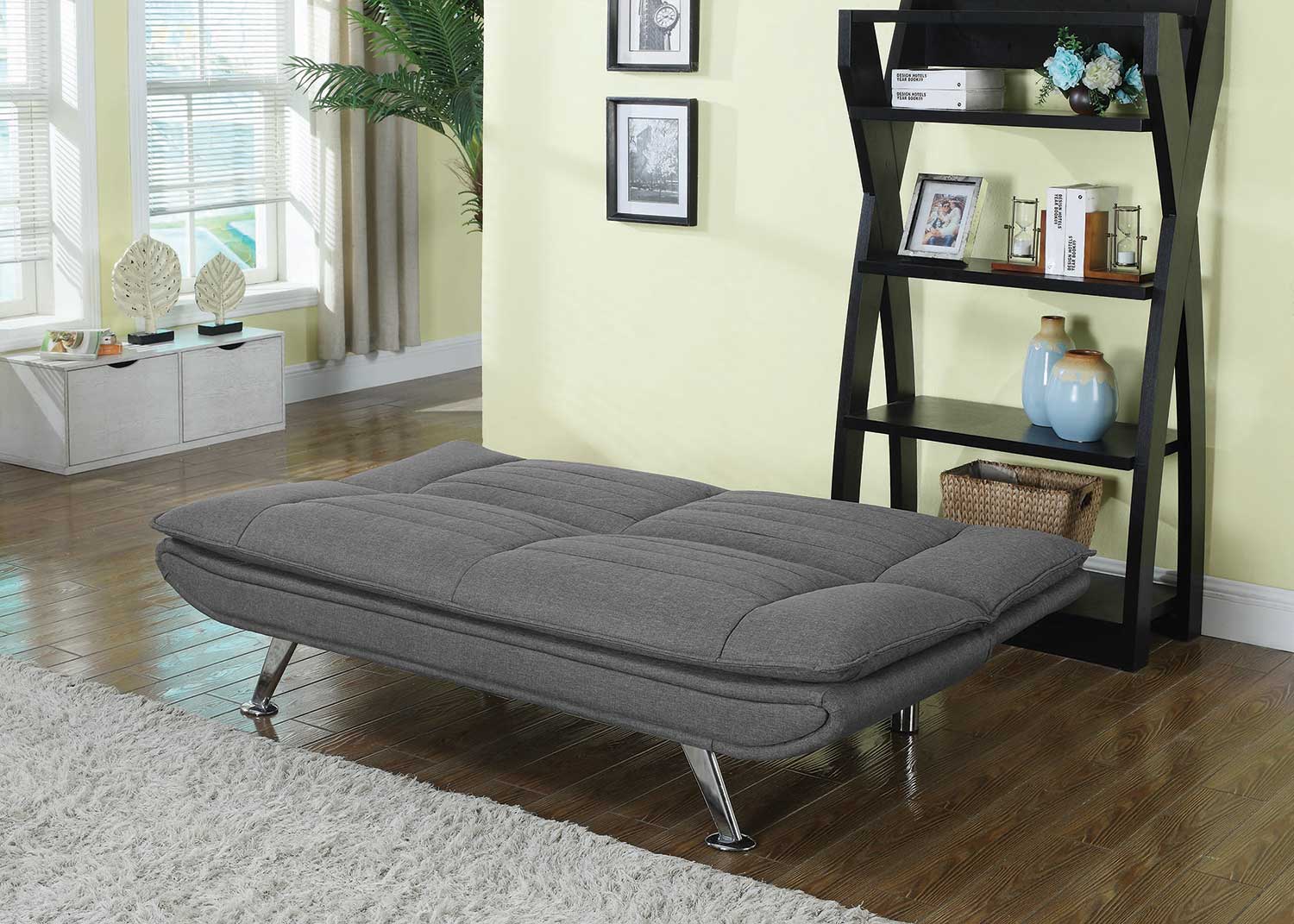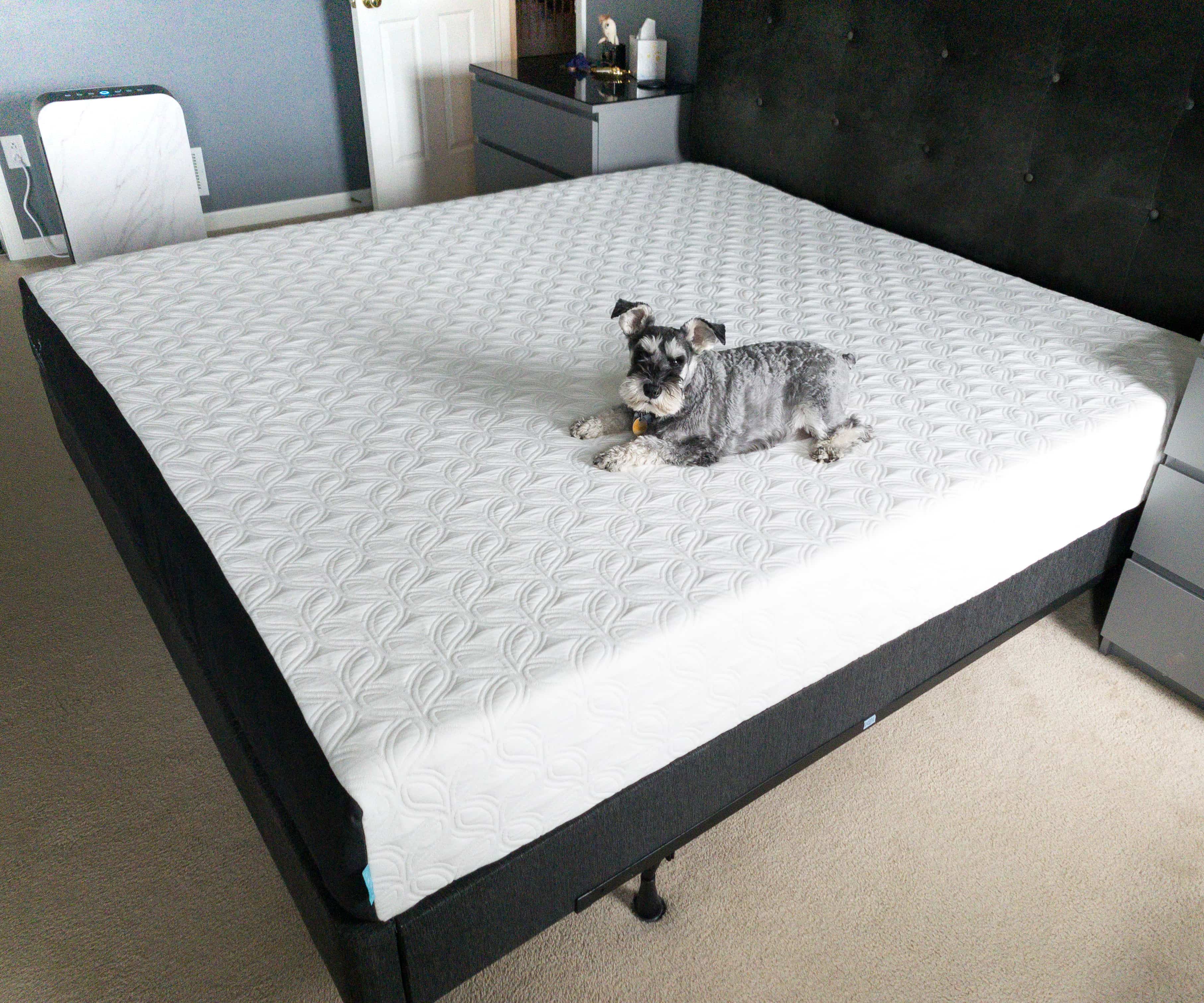The privacy mortise lock is undoubtedly one of the most popular locks used in 1950’s interior doors. This lock includes a knob on door's interior side and a keyhole on the exterior side. Mortise locks offer more security than cylinder locks, as they fit completely into the door, making them more resistant to tampering. They are ideal for bedrooms and bathrooms where you want more privacy than what a knob or lever can offer.Privacy Mortise Lock
The bored door lock is a type of lock that is installed into a hole that is pre-drilled into the door. This hole contains a cylinder that has a set of moving tumblers located inside. This type of lock is also referred to as a cylindrical or key-in-knob lock. It was often used for entrance doors in the 1950s. This type of lock offers a high level of security, and they are relatively easy to install.Bored Door Lock
The entry mortise lock is a type of mortise lock designed specifically for entrance doors. It includes a catch on the interior side of the door and a keyhole located on the exterior side. The entry mortise lock offers the highest level of security out of all mortise locks, as it utilizes a complex latch system and is very difficult to break into. It is a great option for front doors.Entry Mortise Lock
The knob/button latch is a type of latch typically used for interior doors. It consists of a knob or button located on both sides of the door that is designed to turn and engage and disengage the lock. This type of lock was popular during the 1950's as it was one of the simpler and less expensive locks available at the time.Knob/Button Latch
The flush bolt is a lockset designed to secure two doors that are connected. It is typically installed at the top and bottom of the side of the door jamb, where one leaf is locked into the other. This type of lockset was commonly use in French doors in the 1950s, and it is still commonly used today.Flush Bolts
The hasp & staple is a type of lockset used to secure a door from the outside. It consists of a lock head attached to a hinged loop and an eyelet that is recessed into the door. This lockset was typically used for garden gates, sheds, outhouses, and other areas where extra security is needed.Hasp & Staple
The vintage door knobs were popular in the 1950’s and can still be found today in some homes. They come in a variety of shapes and sizes and can be made of many different materials, such as brass, steel, wood, and other metals. Vintage door knobs offer a classic look and can be a great way to add a touch of nostalgia to any home.Vintage Door Knobs
The pocket door hardware is a type of door hardware designed to be installed on pocket doors. Pocket doors are doors that are recessed into the wall, which allows them to slide open instead of opening outward. Pocket door hardware includes the track and rollers needed to secure and move the door along the track, as well as handles and locks. Pocket Door Hardware
An escutcheon is a type of door hardware used to cover the hole or keyhole in a door. It provides a decorative finish and also helps protect the door from damage caused by the key. In the 1950s, escutcheons were typically made from brass or metal and came in a variety of shapes, sizes, and finishes.Escutcheons
Replacement interior door locks are available in a variety of styles including bored locks, mortise locks, knob/button latches, and more. These locks are typically used to replace doors that have been accidentally damaged or to upgrade security. Replacement interior door locks are relatively inexpensive and easy to install, making them a popular choice for 1950’s interior doors.Replacement Interior Door Locks
1950's Interior Doors Hardware
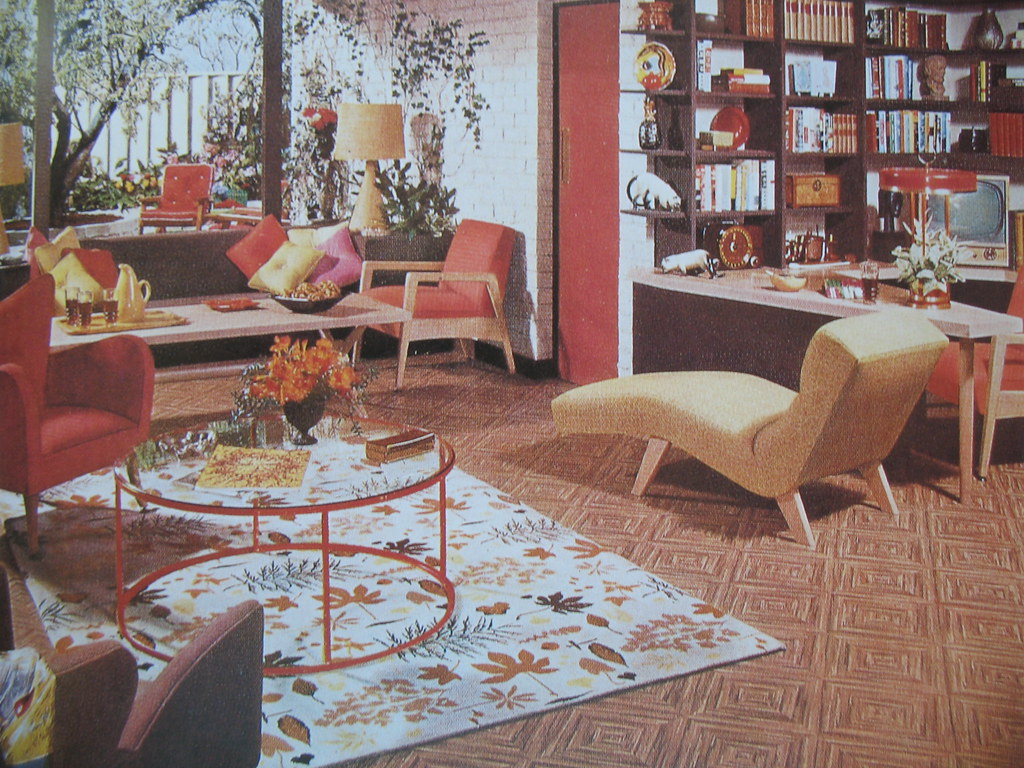 The first impression one gets when they enter a
house
, be it a home, office, school, or any other kind of building, is the interior doors and its hardware. In the 1950s, there was an emergence of design-oriented hardware that brought personality and character to the interior doors.
Interior doors hardware
was a major design element of the decade, and they range from sleek modern designs to more vintage and classical styles.
It is essential for any interior designer to understand the vast range of 1950s interior door hardware and the areas in which it can be applied for a truly timeless design. Whether it's a
modern
house or a more traditional setting, the hardware can make a significant difference in the look and feel of the space.
Many of the hardware designs used in 1950s interiors include stylish door knobs, levers, and handles in a variety of metals and finishes.
Brass
, chrome, and steel were the most popular finishes used, but there were also many decorative designs available to bring a unique flair to the space.
For a vintage feel, there are also many
bakelite
door knobs and lever handles available, which can often still be found in salvage warehouses or antique stores. These durable and classic pieces provide beautiful accents to any interior.
When selecting the 1950s interior door hardware for your home or business, it is important to consider both the look and feel of the space as well as its function. For example, if you are looking for sliding doors or pocket doors, you should select door hardware that is designed for these particular applications. If you are looking for a more contemporary design, a classic door knob or lever handle may not be the best choice.
Additionally, the 1950s interior door hardware should be matched to the existing overall design, from the flooring to the walls and windows. By selecting pieces that complement the overall style, you can create an interior space with cohesiveness and form.
It is also essential to measure the door for a proper fit. Door hardware is generally available in many sizes, from 2-3/8" to 2-3/4", so be sure that the hardware you select will fit your door.
With a careful selection of 1950s interior door hardware, you can add a touch of vintage charm to your home or business. Whether you are looking for a modern, traditional, or vintage design, you are sure to find the perfect pieces to create the perfect interior.
The first impression one gets when they enter a
house
, be it a home, office, school, or any other kind of building, is the interior doors and its hardware. In the 1950s, there was an emergence of design-oriented hardware that brought personality and character to the interior doors.
Interior doors hardware
was a major design element of the decade, and they range from sleek modern designs to more vintage and classical styles.
It is essential for any interior designer to understand the vast range of 1950s interior door hardware and the areas in which it can be applied for a truly timeless design. Whether it's a
modern
house or a more traditional setting, the hardware can make a significant difference in the look and feel of the space.
Many of the hardware designs used in 1950s interiors include stylish door knobs, levers, and handles in a variety of metals and finishes.
Brass
, chrome, and steel were the most popular finishes used, but there were also many decorative designs available to bring a unique flair to the space.
For a vintage feel, there are also many
bakelite
door knobs and lever handles available, which can often still be found in salvage warehouses or antique stores. These durable and classic pieces provide beautiful accents to any interior.
When selecting the 1950s interior door hardware for your home or business, it is important to consider both the look and feel of the space as well as its function. For example, if you are looking for sliding doors or pocket doors, you should select door hardware that is designed for these particular applications. If you are looking for a more contemporary design, a classic door knob or lever handle may not be the best choice.
Additionally, the 1950s interior door hardware should be matched to the existing overall design, from the flooring to the walls and windows. By selecting pieces that complement the overall style, you can create an interior space with cohesiveness and form.
It is also essential to measure the door for a proper fit. Door hardware is generally available in many sizes, from 2-3/8" to 2-3/4", so be sure that the hardware you select will fit your door.
With a careful selection of 1950s interior door hardware, you can add a touch of vintage charm to your home or business. Whether you are looking for a modern, traditional, or vintage design, you are sure to find the perfect pieces to create the perfect interior.

